Sunday, Nov 6
For Nov 5 CPAP. Reported figures. AHI= 0.16. Events: 1 H, 9 RERA. Time on 6 hrs 15 min with (max = 10 L/min). Oximetry: SpO2 one blip to low 86, only 1 other below 88 with avg., 91.8%.
Experienced a long day, mostly away from home. We took a field trip, conducted by Nick Zentner (CWU Geologist) to find the location of courses the Columbia River has taken in the past. It was a fascinating day.
We went to town early for gasoline for John’s car, and got to the leaving point on campus before the 10:00 departure time. We did not get home until almost dark.
Our first stop was south of Ellensburg, was to view rocks deposited by the Yakima River, with access from Ringer Loop.
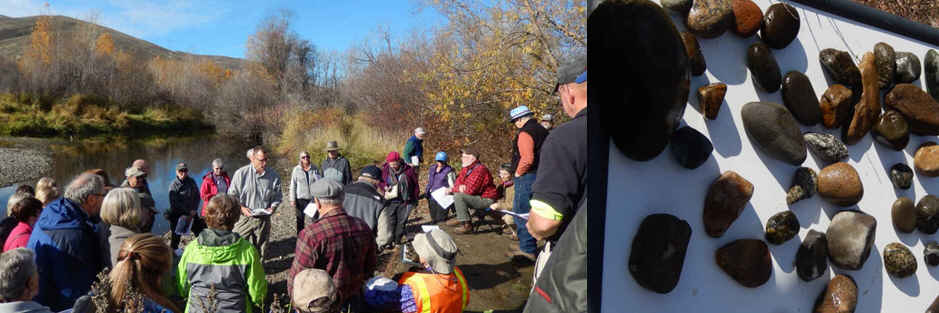 John is visible in the top right of the left photo, with his light blue hat. The right photo has 3 of his small rounded found rocks at the top left. Most of the rocks are darkish and many are not very roundish. Such are typical of the Yakima River because of the closeness of the mountain source regions and types of rocks found there.
John is visible in the top right of the left photo, with his light blue hat. The right photo has 3 of his small rounded found rocks at the top left. Most of the rocks are darkish and many are not very roundish. Such are typical of the Yakima River because of the closeness of the mountain source regions and types of rocks found there.
The second stop was past Moxee at Konnowac Pass, an old wind gap (a failed water gap).
 I took both of these photos on my way slowly up the hill to join the crowd for Nick’s presentation. The trees are fruit orchards, still with leaves but most of the color is gone.
I took both of these photos on my way slowly up the hill to join the crowd for Nick’s presentation. The trees are fruit orchards, still with leaves but most of the color is gone.
The next stop was likely my favorite of the trip. First, the view when we got out of the car is directly below.
 To appreciate this, watch my very short movie of Emerald Road Cobbles, laid down by the old Columbia River.
To appreciate this, watch my very short movie of Emerald Road Cobbles, laid down by the old Columbia River.
Next is a collage of some close-ups of the river rock cobbles at that site.
 Finally, from across the street overlooking the Yakima River is this collage:
Finally, from across the street overlooking the Yakima River is this collage:
 Left Nick explains how the river rocks across the street were not deposited by the Yakima River behind him, but by the Columbia River during another route it took long ago. The middle photograph is to his left and focuses on Toppenish Ridge, with the Yakima River in the foreground, and below our position. The right photo is looking (northeast) at the many feet of cobbles, all very roundish and most orange-ish, unlike the rocks from the Yakima River (1st photo, above). The Columbia River begins near the Village of Canal Flats (Canada), but other big rivers also flow in the region, namely the Kootenay, Clark Fork and others near Missoula, MT. So the small rock he is holding has an unknown source, but it did not come from the drainage of the Yakima.
Left Nick explains how the river rocks across the street were not deposited by the Yakima River behind him, but by the Columbia River during another route it took long ago. The middle photograph is to his left and focuses on Toppenish Ridge, with the Yakima River in the foreground, and below our position. The right photo is looking (northeast) at the many feet of cobbles, all very roundish and most orange-ish, unlike the rocks from the Yakima River (1st photo, above). The Columbia River begins near the Village of Canal Flats (Canada), but other big rivers also flow in the region, namely the Kootenay, Clark Fork and others near Missoula, MT. So the small rock he is holding has an unknown source, but it did not come from the drainage of the Yakima.
 Story of Quartzite inside Cobble on Snipes Ridge near Sunnyside, WA pictured above, and videoed below.
Story of Quartzite inside Cobble on Snipes Ridge near Sunnyside, WA pictured above, and videoed below.
Nick Zentner with cracked-open cobble explaining the Quartzite inside from the old Columbia River deposited rock along Emerald Road on Snipes Ridge near Sunnyside, WA on 11-6-16, Field Trip, “Chasing the Old Channel of the Columbia River.” It is Precambrian Quartzite, older than 500 million years. Brief intro here, 21 seconds, see above link.
Below is a further short video introduction (1 minute) to the old channel of the Columbia River that deposited this picturesque river rock feature.
Old Route of the Columbia River near Sunnyside, WA
Below are the rocks we carried away from our day in the field.
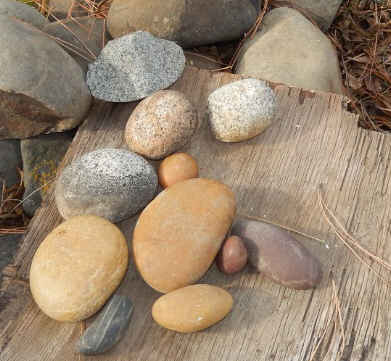 These (just on the board) are what John collected. Top 4 (whiteish) are from the current Columbia just downstream of Priest Rapids Dam. The large flattish orange one (and the others close by) are from the cobbled hillside (southwest side of Snipes Mtn., between Granger and Sunnyside. The new rocks will find a place among our other rock-garden treasures. Do you have anything that is 500 million years old?
These (just on the board) are what John collected. Top 4 (whiteish) are from the current Columbia just downstream of Priest Rapids Dam. The large flattish orange one (and the others close by) are from the cobbled hillside (southwest side of Snipes Mtn., between Granger and Sunnyside. The new rocks will find a place among our other rock-garden treasures. Do you have anything that is 500 million years old?
Monday, Nov 7
For Nov 6 CPAP. Reported figures. AHI= 0.40. Events: 3 H, 15 RERA. Time on 7 hrs 34 min with (max = 19 L/min). Oximetry: SpO2 3 blips to 88, 0 < 88 with avg., 92.2%. (Probably low considering a spurious 83 which doesn't show on the graph I received & inexplicable considering the events below 88% is zero)
Much of my day was spent assembling my medical reports for tomorrow’s doctor appointment, filling in our voting ballots to drop off at the courthouse on election day, and reviewing more of the master’s thesis for which I’m on the committee (to be defended in a week) at the graduate program at CWU – Cultural & Natural Resource Management. I retired April 2010, but stayed on this committee. It is my last. Over the past several years, Terri Towner researched this thesis, entitled, “Everyday Farm Life in the Moxee Valley 1915-1950 Historical Ethnography.” We went through the Valley just before our 2nd stop on the Sunday field trip.
Tuesday, Nov 8
For Nov 7 CPAP. Reported figures. AHI= 0.29. Events: 2 H, 19 RERA. Time on 6 hrs 58 min with (max = 16 L/min). Oximetry: did not record properly.
We left for the start of our doctor appointments at 9:25 a.m. in
Cle Elum, 45 minutes away. We participated together. This was part one of our annual physicals. Part two is next Tuesday, same time. Today was primarily data gathering of vitals and a fasting blood draw. After the nurse collected information, we visited with our doctor, who will be retiring in May 2017. He was going to retire in December but a new Doc isn’t coming in time. Regardless, this will likely be our last appointment with Dr. Paul – started in 1988/89.
On the way home, we drove back through Ellensburg to Grocery Outlet for ice cream and cat food and dropped off our election ballots at the Courthouse drive-up box receptacle. Ballots are mailed to us and we drop them in a box, but could mail if we needed to. The car in front of us pulled away just before we got there, so no waiting. Our citizen-duty done, we talked with John’s sister Peggy (in Ohio) for the trip back home.
I returned home, changed clothes, and went to Bi-mart to check my number and bought two kinds of cough drops; luckily, one type was on sale for 50¢ off, a 25% larger package than I had recently bought.
I went to get my 3-month medical supplies (for CPAP machine, supplies and equipment), and found out starting Oct 13, I no longer get a break on prices for supplies and equipment paid for by Medicare. They have cut back 45% on payments for the stuff I have been getting without any $ crossing hands every 3 months. The medical costs are rising all around – not a surprise but not welcome either.
I picked up limited supplies today at Kittitas Medical Supply. Now it will cost me almost $185.00 every quarter. I did not get the mask, nosepieces, and short tubing, saving that money. I will just clean the mask I have and keep using it. At least they gave me the two filters, one foam and three paper ones. That is charged out at $48.00 to Medicare, and my supplier decided to take the loss on that, but not on the mask parts or both sections of tubing.
Here’s the scoop — especially if you depend in part on Medicare.
2016 is the year of Medicare’s Rural Payment cuts.
You can voice your concerns, in WA:
with Senators
Patty Murray 866-431-9186
Maria Cantwell 202-224-3441
Ask them to pass Senate Bill 2312 to roll back the rural Medicare cutbacks.
Congressman Dave Reichart 202-225-7761
needs to be requested to sponsor Bill 4185, which will do the rollback needed.
IF you have a specific Medicare complaint about the decline in your home healthcare services, call the Medicare Complaint Hotline (NOT AFFILIATED WITH MEDICARE). You will be asked to leave your name, phone number & complaint, and they will get back to you.
CALL 800-404-8702.
I did this, and if you follow below, you will see the interesting results.
I also went to Jazzercise class this afternoon for 45 minutes and it was too much considering I have not exercised in 3+ weeks.
I canceled my contribution playing and singing music at Hearthstone tonight because I am not up to it. It is with The Connections and is religious music, twice monthly.
Wednesday, Nov 9
For Nov 8 CPAP. Reported figures. AHI= 0.00. Events: 7 RERA. Time on 6 hrs 57 min with (max = 10 L/min). Oximetry: SpO2 one blips to low 87, all rest > 88 with avg., 91.5%. (Spurious blip to 78, probably from changing fingers on Oximeter).
I picked up Gloria and we went to the Food Bank to sing and eat, and to SAIL exercise. I was feeling much better today. I came home to more thesis chapter reviews.
Thursday, Nov 10
For Nov 9 CPAP. Reported figures. AHI= 0.64. Events: 5 H, 19 RERA. Time on 7 hrs 50 min with (max = 18 L/min). Oximetry: SpO2 blip to low 86, 5 < 88 with avg., 91.8%. A friend shared this interesting link with me. You may wish to check it out, especially if you want to voice your comment about the Medicare cutbacks. If you do not live in Washington State, there likely is something similar for other states. The information on all the elections we have voted in, since 2005 is informative. (No, nothing is revealed about your voting behavior. Just that you did.) weiapplets.sos.wa.gov/myvote/#/login
I went to Meadows Place today for music. I forewarned the activities director and the head as to the count for armless chairs, but they were not ready for us, having no chairs out, tables moved, or fireplace turned off. We had to set up ourselves. We only had 7 of us there to play because of scheduling conflicts with doctors, school functions, and other activities. We had an appreciative audience.
I filled the Forester’s tank with gas, so it was not a completely wasted day.
Most of any spare time left the past few days, even when I was feeling bad, I have been reviewing the thesis, for which the defense is Monday. I am on my third read of every chapter (of eight). I am the only committee member reading not only for content, but also for grammar, syntax, phrasing, details, spelling, margins, style, and anything else I see. To me, I have to get those problems out of the way to be able to digest the content. The committee consists of me, a geographer, the chair, an anthropologist, and the other member is an historian.
Friday, Nov 11
For Nov 10 CPAP. Reported figures. AHI= 0.13. Events: 1 CSR, 1 H, 14 RERA. Time on 7 hrs 57 min with (max = 13 L/min). Oximetry: 0 events < 88 with avg., 92.0%. (Spurious blip to 79 probably from changing fingers on Oximeter).
I am downloading the first 7 chapters’ final copies of the thesis, with all the edits I have noted over the past couple of weeks, corrected. Her defense is Monday from 1:00 – 4:00 p.m. This is my last ever thesis committee! Having been retired since April 2010, it is about time I quit doing professorial work, don’t you think? This is all volunteer time. I no longer have any salary or a phone, or access to previous student / class information from being a full-time faculty member since 1988. However, I do still receive mail at CWU and maintain my old email account there, have a permanent (free) parking sticker, and access to the James Brooks Library (including an excellent Music Library with access to Inter-library loan), so I have a few benefits left. I also continue to get requests for letters of recommendation for former students for jobs for which they are applying. I know few of the students any more, except through my continued work on a Google Groups job announcement list with almost 800 members, NW Geography Jobs. Via it, I actually publish daily job opportunities in many disciplines besides geography (biology, environmental sciences, geology, economics, political, forest service, government jobs (DNR, DFW, DOT) graduate school opportunities, faculty jobs, and techniques such as GIS, mapmaking, geospatial, & engineering.
Regardless of your voting preference, this link is a HOOT!
Donald Trump meets Barack Obama – five awkward photos
Today, I received a phone call from the research group collecting information on my Medicare Complaint Hotline call earlier this week.
They requested my “story” – and here it is below. I plan to submit it via email so they will receive on Monday morning, Nov. 14. This was my letter to the research team examining nationwide Medicare Complaints Hotline. Skip to the next photo if the text doesn’t interest you.
Nancy’s Complaints Regarding Medicare cutbacks proposed for 2016 of 45% in Pap, wheelchairs, oxygen and other healthcare equipment.
I called the Medicare Complaint Hotline at 800-404-8702 on 11/10/16 and had a return call on 11/11/16, Veterans’ Day. Luckily, I was home.
The first call came at 11:26 from an Iowa number: 319-274-7913, with the caller ID, V GM MGMT LTD. I let the answering machine catch it, and then when I realized what it was, I picked up the phone. I imagine we talked 20 minutes. After I told her my story and all the information she wanted (mostly my location and how I am affected by the monetary cuts), I mentioned I was going to search our recent garbage to look for my mask I threw away before realizing this week I could no longer replace it, as I had been doing every 3 months, since September of 2014. This mask was particularly dirty from in-taking dust from our dirty rural house. I SHOULD have kept it and washed it thoroughly–especially now that I know the cost, I will have to pay for a new one that is no longer covered 100% by Medicare reimbursements (and my supplemental Group Health insurance). It seemed worth the effort to search our garbage for the unit, now worth an outlay of $34.99 (reimbursement of $19.00 later) for the headgear straps, and the clincher, the connected Mask/nasal pillow with short tubing for an outlay of $129.99 (reimbursement of $61.02 later), reimbursements to come to the patient sometime in the future. It will be interesting to see the amount of time that elapses. Those figures mean my out of pocket cost for the head mask every three months will be $15.99 + $68.97 = $84.96. This time, I chose not to pay the cost for the head mask and accessories (tubing). I chose not to buy the longer tubing because I have a couple left I can use. And, I can wash them out as well. I did not check their replacement price. The filters cost total for one foam filter and two packs of 2 each of the paper filters which need to be changed every 2 weeks, or possibly more often in a dusty house as ours, are $48.00 total. Medicare used to cover the longer compressed air tubing and all filters, but now they will not. My medical supply provider, Kittitas Medical Supply, has decided to continue “giving” the filters to clients because their loss on them is not as drastic as the loss on the payback for the masks, headgear, and tubing. I am grateful for that perk and support. Therefore, on Tuesday this week, 11/8/16, I only walked away with the filters for replacement, and no money exchanged hands.
We started searching and an hour after the research team called, and she returned a call and asked me if I was willing to write my story for an on-line “article.” When she heard I was, she asked me to take pictures of the search and of my find. I told her I would. Sadly, I had to report that we did not find it. We both find it difficult to believe we missed it, but I know I put it in the garbage and we searched every bag clear back to May. We could not locate it, but I did take some photos of the effort.
I will try to answer the following questions the researcher asked me, on a returned email, and I have marked in bold.
How is medical equipment important to you?
Of the equipment affected by the cutbacks, I only am hurt by one, the PAP, or the CPAP machine’s supplies for operation nightly. The importance to me personally is not for sleep apnea, but for keeping my SpO2, blood oxygen saturation level above 90%, while I sleep. In my case, it is very necessary because of a heart valve (Mitral) replacement I had in Dec 2009. I bought myself an Oximeter (my cost, sadly not covered by insurance of any type), because it is necessary to measure my SpO2 while sleeping with the CPAP machine running. CPAP machines do NOT measure that parameter, or the actual pulse throughout the night. I have an implanted defibrillator that controls my pulse, if it goes below 50. I wear my oximeter now throughout the night so that it measures and records my pulse and my SpO2. Each morning I can read the data from the CPAP (on an SD card) and from the Oximeter, and merge the values via software, with the ability of displaying graphs of everything coordinated from the CPAP and the Oximeter. I have also kept my oximeter on, after turning off my CPAP machine, and recorded the data without the CPAP operating. I review that each morning, and I have printed graphs to share with my cardiologist and my sleep doctor to display my findings. It definitely makes a difference in the value of the SpO2 figures. One interesting thing (to me anyhow) is that the CPAP does not prevent all decreases below 88% SpO2, and that on occasion there is evidence that continuing the recording off the CPAP does not show a decrease in the SpO2.
I will add two graphs from the CPAP’s SleepyHead software comparing to the Oximetry, and another from the Oximetry’s SpO2 Review software showing the graph overnight of the pulse and SpO2 values, with and without the CPAP. You on the blog have previously seen those graphics, so I won’t include them here.
What do you use?
I have answered this question above. The only equipment I use is a CPAP machine with its associated needs for a mask, tubing, and filters.
How have Medicare’s funding cuts personally impacted you?
I have also addressed that above in the first question. I am hopeful that Senate Bill #2312 and House Bill #4185 will be passed in Congress, and the result will be to roll back the rural Medicare cutbacks. I have paid into the system, and I believe others and I should not be limited in our ability to get care and supplies. I realize that some other folks are more financially restricted than I am, but it should be helpful across the board. Yes, I certainly also understand the huge expenses of the medical system and Medicare’s need to adjust, and I am also aware of the large debt our country has incurred.
What medical equipment were you looking for in the trash bags?
I was looking for this part of my nightly garb attached to my machine’s main tubing (not shown) and using filters embodied in the CPAP machine. The ruler is in for scale.
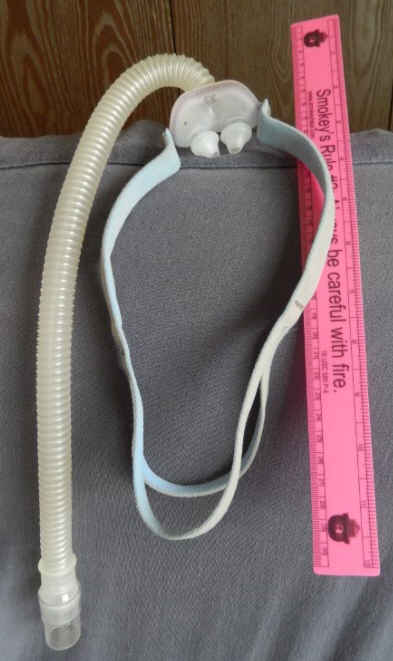 CPAP Mask Head Gear (Nasal Pillow)
CPAP Mask Head Gear (Nasal Pillow)
How we could have missed this is beyond me. However, we searched for an hour and a half.
We live 12 miles from the transfer station (dump), we compost as much garbage as possible, recycle newspaper, plastic, and glass, and we only drive a truckload in every several months. We started with the most recent garbage bags, sorted through and repacked mostly into new black bags, but we also used some dog food bags. We had 15 repackaged and checked when we stopped. We do not have any more bags in the house, garage, shed, or barn.
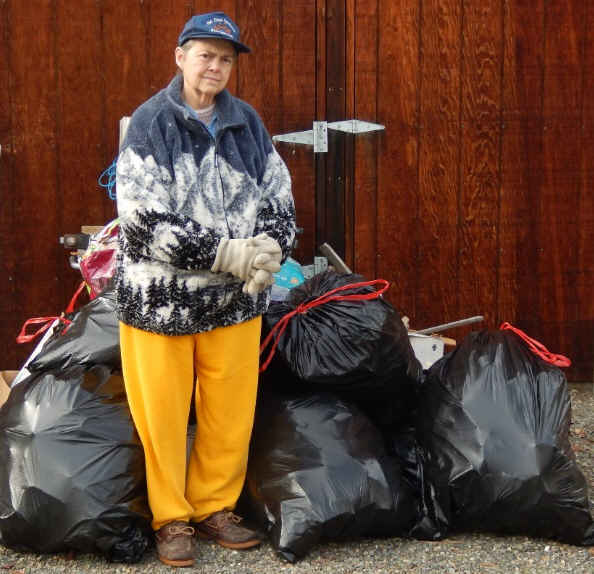 Here is Nancy, in yard clothes, frowning, standing in front of the searched and repackaged 15 garbage bags.
Here is Nancy, in yard clothes, frowning, standing in front of the searched and repackaged 15 garbage bags.
Here is another:
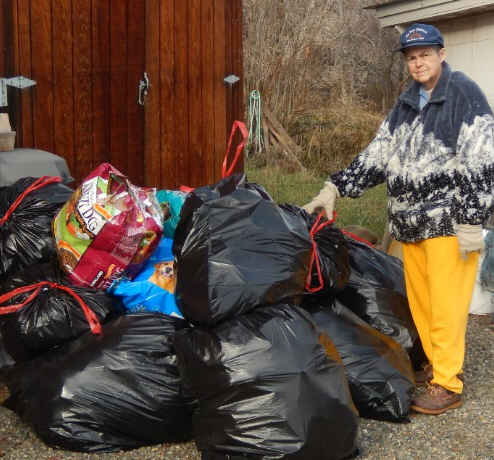 I have on my Washington Old Time Fiddlers hat which goes with my normal activities about town, playing Old Time Music with a group, visiting assisted living and retirement homes providing sing-along entertainment, with a mostly string band.
I have on my Washington Old Time Fiddlers hat which goes with my normal activities about town, playing Old Time Music with a group, visiting assisted living and retirement homes providing sing-along entertainment, with a mostly string band.
Just last Friday, in honor of Veterans’ Day, the Ellensburg Adult Activity Center (Senior Center) provided lunch and activities for 100 people. Our group provided a 1/2 hour of patriotic music.
That’s me on the right with my photo from a previous year there: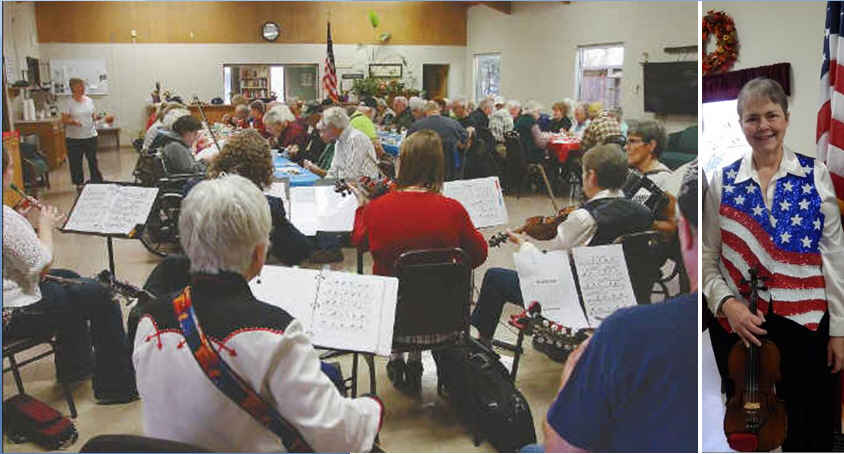 This year (above), we began with a color guard with two of our local veterans in military dress, the pledge of allegiance, then the patriotic songs, and we closed with the National Anthem, acapella, always a moving experience. After that, all the veterans present were brought to the front according to their branch of military service. Two of our players were honored.
This year (above), we began with a color guard with two of our local veterans in military dress, the pledge of allegiance, then the patriotic songs, and we closed with the National Anthem, acapella, always a moving experience. After that, all the veterans present were brought to the front according to their branch of military service. Two of our players were honored.
I have the names and numbers of our WA senators and our representatives to share with everyone I can to request them to pass these two bills. I am trying to spread the news via email and by Facebook.
I will also give them your Medicare Complaint Hotline number so they can do what I did. Thank you for your service.
Sincerely,
Nancy Hultquist
Ellensburg, WA
~ ~ ~ ~ ~ ~ This above was in response to the following email:
Hello Nancy,
Thank you for sharing your story! If you could send me some photos of you looking for your equipment from the garbage (with you in it) that’d be good.
If you could email me back with the following information
How is medical equipment important to you?
What do you use?
How have Medicare’s funding cuts personally impacted you?
What medical equipment were you looking for in the trash bags?
Thank you!
Lalaina Rabary
Digital Content Strategist
VGM Marketing
Lalaina.rabary@vgm.com
866-544-7913
My mission: To make the internet a better place one word at a time
Saturday, Nov 12
For Nov 11 CPAP. Reported figures. AHI= 1.30. Events: 6 H, 8 RERA. Time on 4 hrs 38 min with (max = 13 L/min). Oximetry: SpO2 one (maybe spurious) blip to 82 , 25 < 88 with avg., 91.2%. Oximetry continued to 8 hours.
I spent the day doing a serious computer backup after problems last night and this morning with computer not restoring properly from an update/shutdown. Now we have to get to work again researching a new computer for me to replace this old worn-out laptop.
Details of my Seagate backup drive. Has 997 gig used and available, 865 Gb as of 11-12-16.
Intermingled was working on the thesis review comments and going around our rural block for a long overdue haircut.
Hope your week was fine.
Nancy and John
Still on the Naneum Fan
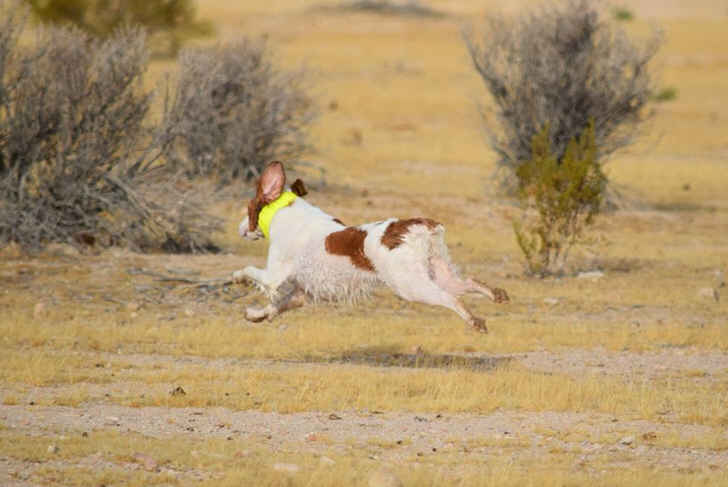 Daisy wants those birds – here in that trial, with ears flying and all four feet off the ground.
Daisy wants those birds – here in that trial, with ears flying and all four feet off the ground. 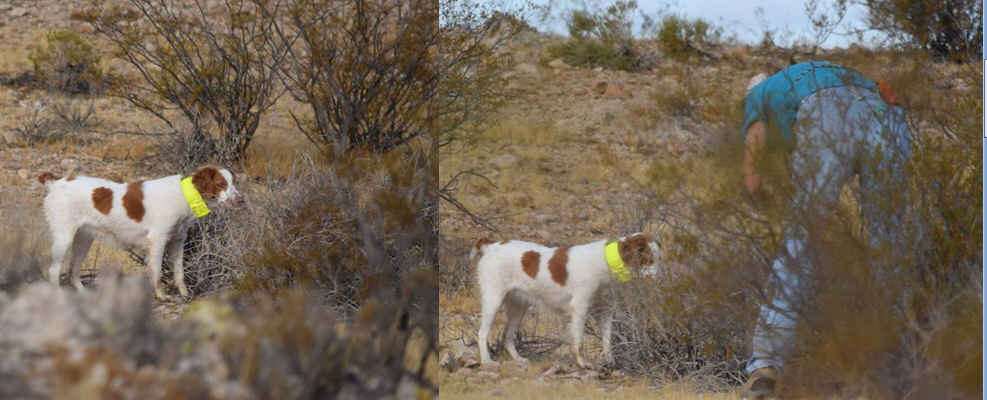 On the same day, another Brittany occurrence happened to take us back to the past, with our ownership of FC Simons Ruff-Shod O’Dee. He was the dog we bred to our DC/AFC/CC Sirius Sashay, the best cross we ever did, that resulted in several dual champions, and many single champions.
On the same day, another Brittany occurrence happened to take us back to the past, with our ownership of FC Simons Ruff-Shod O’Dee. He was the dog we bred to our DC/AFC/CC Sirius Sashay, the best cross we ever did, that resulted in several dual champions, and many single champions.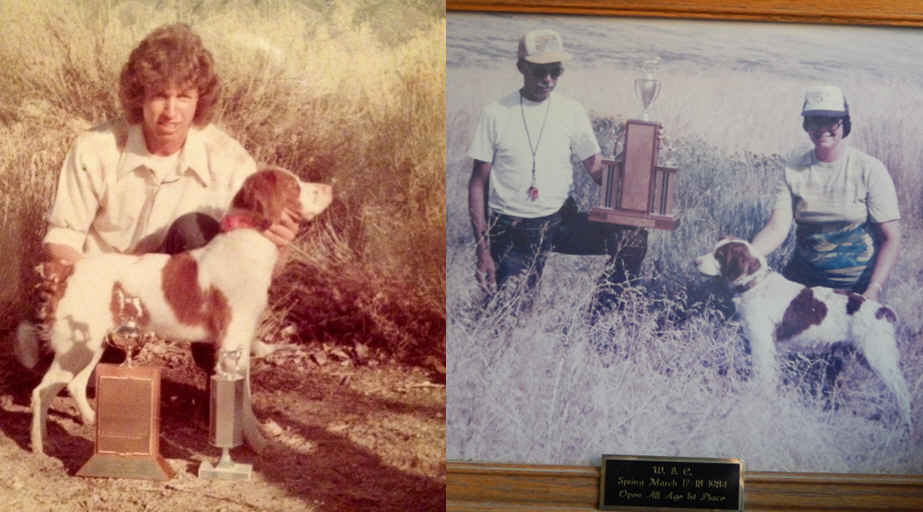 David with Ruff, getting his Derby points, (a dog cannot be over 2 years to run derby stakes). Right, Dan Richmond and me with Ruffy, 1984, when he won the Open All Age at the Washington Brittany club field trial. (Right photo taken by Jeff Sandman, given to the owner in the plaque with the placement engraved at the bottom of the frame.) The trophy was revolving and had to be returned to the club for the next year’s use, and we had to engrave his name on the trophy.
David with Ruff, getting his Derby points, (a dog cannot be over 2 years to run derby stakes). Right, Dan Richmond and me with Ruffy, 1984, when he won the Open All Age at the Washington Brittany club field trial. (Right photo taken by Jeff Sandman, given to the owner in the plaque with the placement engraved at the bottom of the frame.) The trophy was revolving and had to be returned to the club for the next year’s use, and we had to engrave his name on the trophy.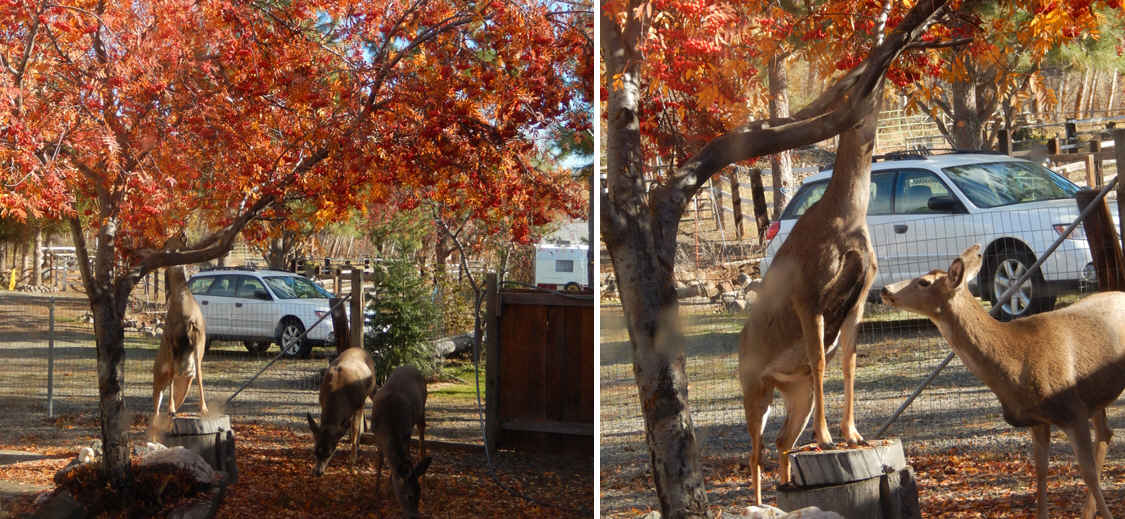
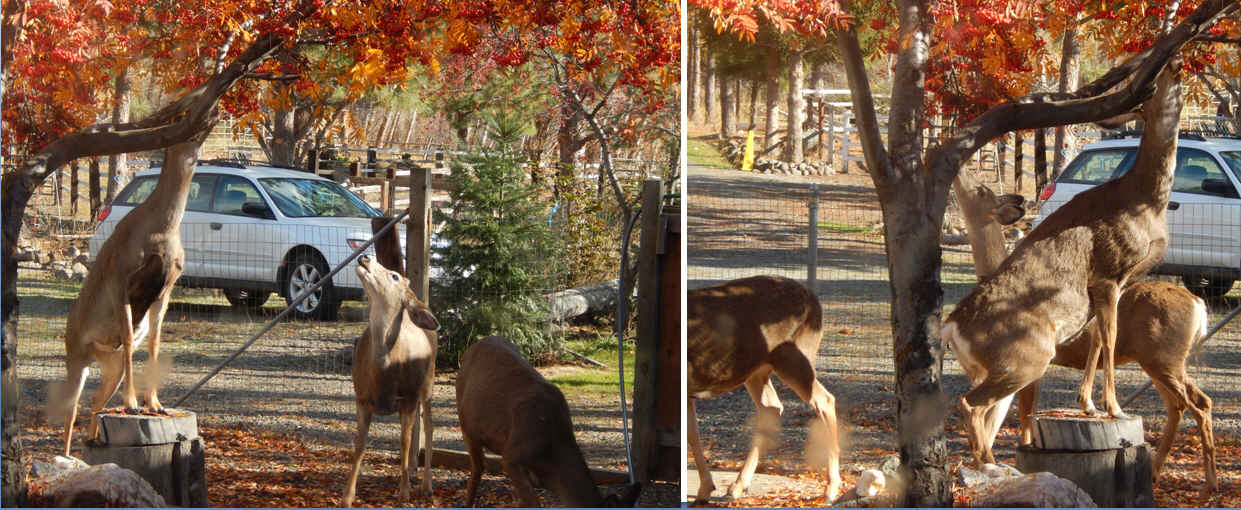 Yes, a couple of the does have learned to step up on things near the base of the tree to gain height to reach the berries. The lower branches they can reach by standing on their back legs. Last year, they used a blue plastic bin.
Yes, a couple of the does have learned to step up on things near the base of the tree to gain height to reach the berries. The lower branches they can reach by standing on their back legs. Last year, they used a blue plastic bin.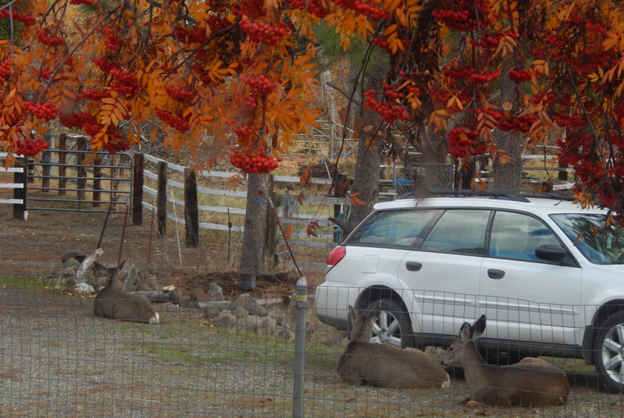 With tummies full (?), the deer lay down to rest, just outside the fence.
With tummies full (?), the deer lay down to rest, just outside the fence. … which was set to begin at 6:00 p.m. with nice appetizers, fruit drinks, beer, and wine. Fortunately, we had our parking sticker validated, and saved the $15.00 fee. We visited with a few folks, grabbed our name tags, walked around REI some, and then went back for a seat on the front row to watch the slide show and see the program (which was full of reports and awards) – John didn’t win any this year, except a pass through November 2017 to a National Park. We already have one for all National Parks, that I bought for $10 at Mt. Rainier, years ago. We were offered free WTA “trail crew” T-Shirts. I got a couple for my exercise classes (red & gray). They are men’s size. I hope the red XL fits me; also, I got a L (gray). The prettiest colors (chartreuse and blue were women’s sizes but way too small for me). John doesn’t wear short-sleeved shirts except under long-sleeved shirts. These are made of plastic and so don’t get and stay wet. Hikers like them. See this:
… which was set to begin at 6:00 p.m. with nice appetizers, fruit drinks, beer, and wine. Fortunately, we had our parking sticker validated, and saved the $15.00 fee. We visited with a few folks, grabbed our name tags, walked around REI some, and then went back for a seat on the front row to watch the slide show and see the program (which was full of reports and awards) – John didn’t win any this year, except a pass through November 2017 to a National Park. We already have one for all National Parks, that I bought for $10 at Mt. Rainier, years ago. We were offered free WTA “trail crew” T-Shirts. I got a couple for my exercise classes (red & gray). They are men’s size. I hope the red XL fits me; also, I got a L (gray). The prettiest colors (chartreuse and blue were women’s sizes but way too small for me). John doesn’t wear short-sleeved shirts except under long-sleeved shirts. These are made of plastic and so don’t get and stay wet. Hikers like them. See this: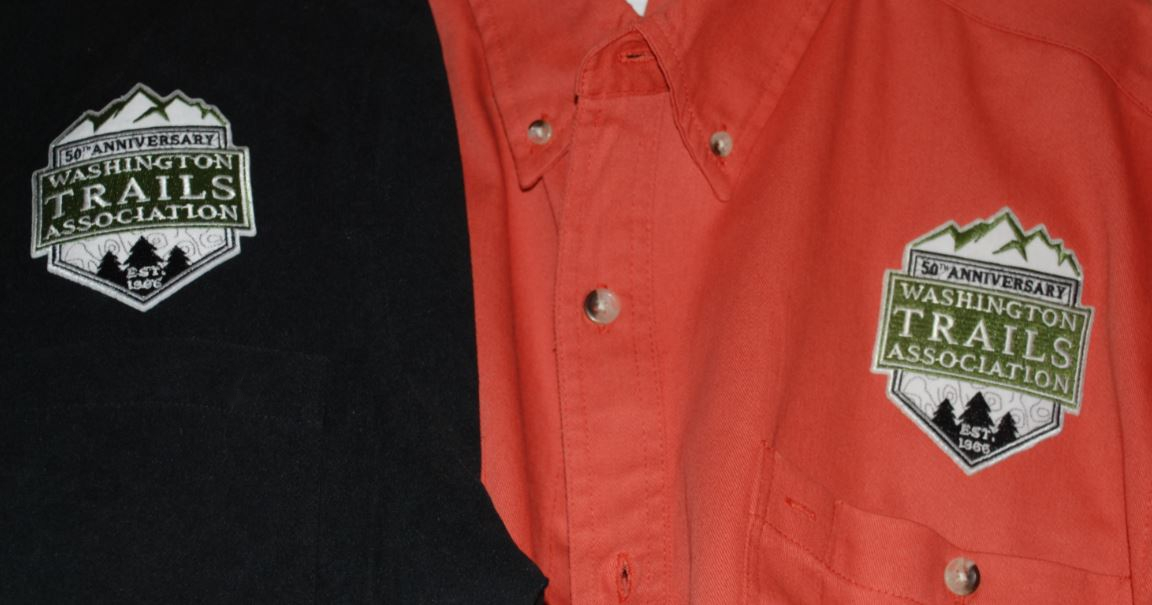 John had ironed the patches on the shirts earlier in the week. We are protecting them to wear only on special occasions, so they don’t have to go through the washing machine and chance losing the patch, or messing it up.
John had ironed the patches on the shirts earlier in the week. We are protecting them to wear only on special occasions, so they don’t have to go through the washing machine and chance losing the patch, or messing it up. 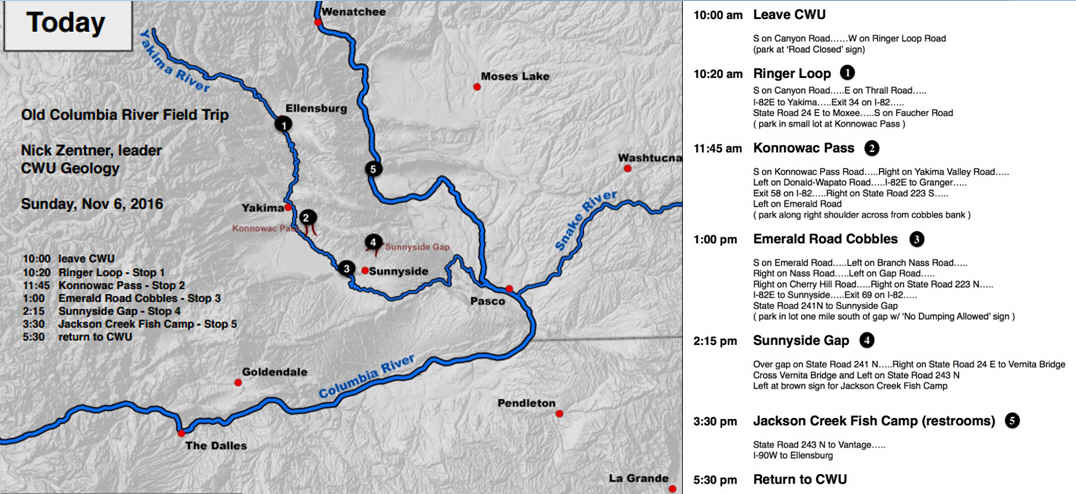

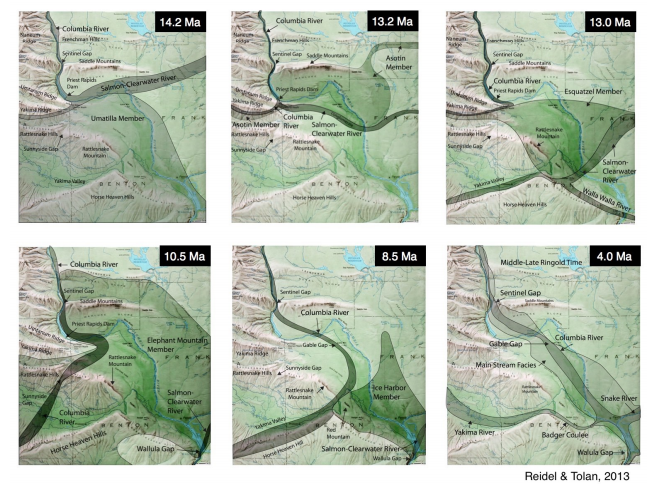 For the trip, the weather is supposed to be sunny and a bit cool, unlike today’s rain.
For the trip, the weather is supposed to be sunny and a bit cool, unlike today’s rain. 
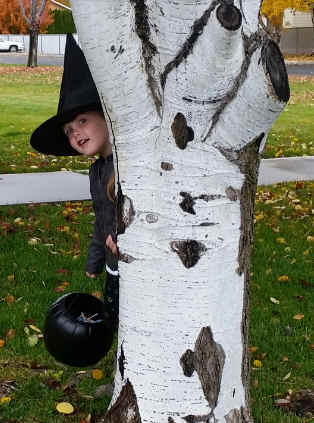 Haley with her pot of goodies. Looks like a sweet witch, not an evil queen.
Haley with her pot of goodies. Looks like a sweet witch, not an evil queen. I guess I should have held the sign on my other side, and higher!
I guess I should have held the sign on my other side, and higher!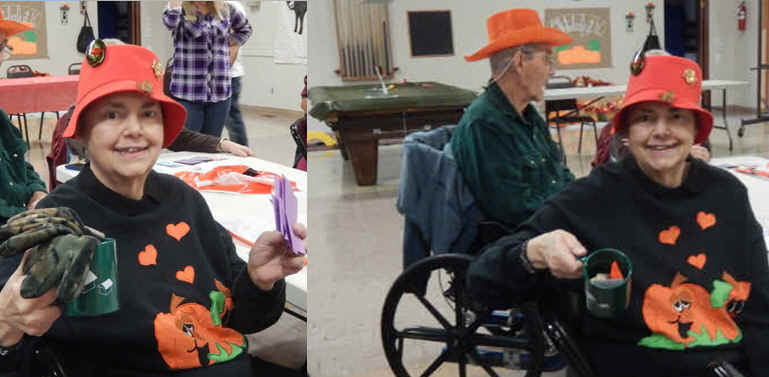 Left, my first win of the day, camouflage gloves in a Knudson Lumber coffee mug. Right, the last win of the day at 2:00 p.m., a matching coffee mug with candy. I’m sitting in front of Frank, who back in 2010 had a stroke, and we were together in physical therapy at the local Rehabilitation Center (acute care home).
Left, my first win of the day, camouflage gloves in a Knudson Lumber coffee mug. Right, the last win of the day at 2:00 p.m., a matching coffee mug with candy. I’m sitting in front of Frank, who back in 2010 had a stroke, and we were together in physical therapy at the local Rehabilitation Center (acute care home). Both out of focus because people don’t push the button half way down to focus before taking, and I did not have the flash turned on, which really helps in low light. Left photo: Ada, Nancy, and Gloria (Gloria will be 91 on Veterans’ Day). Right: Michael Buchanan, Ada’s son, who was my student in two classes in 1993. He invited me to the party, and is always complimentary about my being the best teacher he had. He went on to be a successful urban planner and now is a software developer / engineer. Gloria and I knew Ada from our SAIL exercise class at the AAC. He and Norma came over to Briarwood to visit a year or so ago on a 3rd Saturday of the month, when our music group goes there to entertain. Imagine my surprise, when I saw him in the audience. I said something such as, “I know you!” I never knew until then that Ada was his mom. Small world.
Both out of focus because people don’t push the button half way down to focus before taking, and I did not have the flash turned on, which really helps in low light. Left photo: Ada, Nancy, and Gloria (Gloria will be 91 on Veterans’ Day). Right: Michael Buchanan, Ada’s son, who was my student in two classes in 1993. He invited me to the party, and is always complimentary about my being the best teacher he had. He went on to be a successful urban planner and now is a software developer / engineer. Gloria and I knew Ada from our SAIL exercise class at the AAC. He and Norma came over to Briarwood to visit a year or so ago on a 3rd Saturday of the month, when our music group goes there to entertain. Imagine my surprise, when I saw him in the audience. I said something such as, “I know you!” I never knew until then that Ada was his mom. Small world.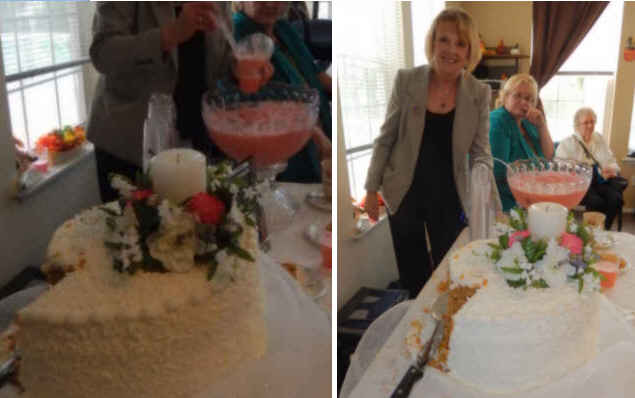 Here is the cake & raspberry punchbowl. On the right is Norma. I guess I should have used a flash, because I took these photos and cannot blame anyone else for their being out of focus.
Here is the cake & raspberry punchbowl. On the right is Norma. I guess I should have used a flash, because I took these photos and cannot blame anyone else for their being out of focus.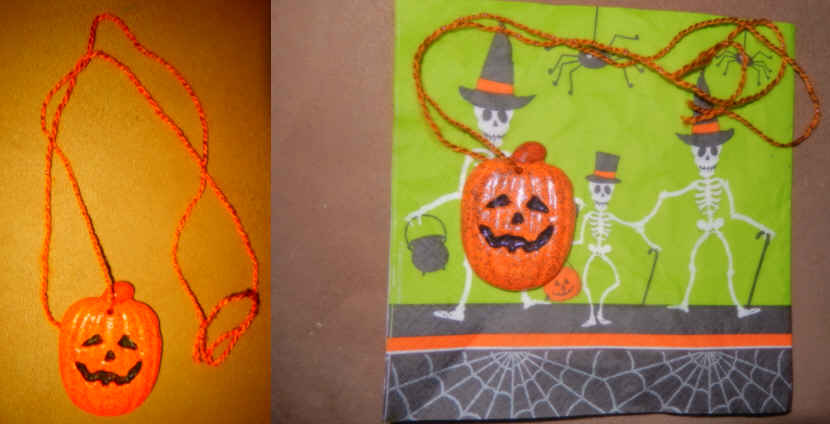 On the bar stool seat, left, it lacks scale. On a standard sized paper napkin, right, its size is better shown.
On the bar stool seat, left, it lacks scale. On a standard sized paper napkin, right, its size is better shown.
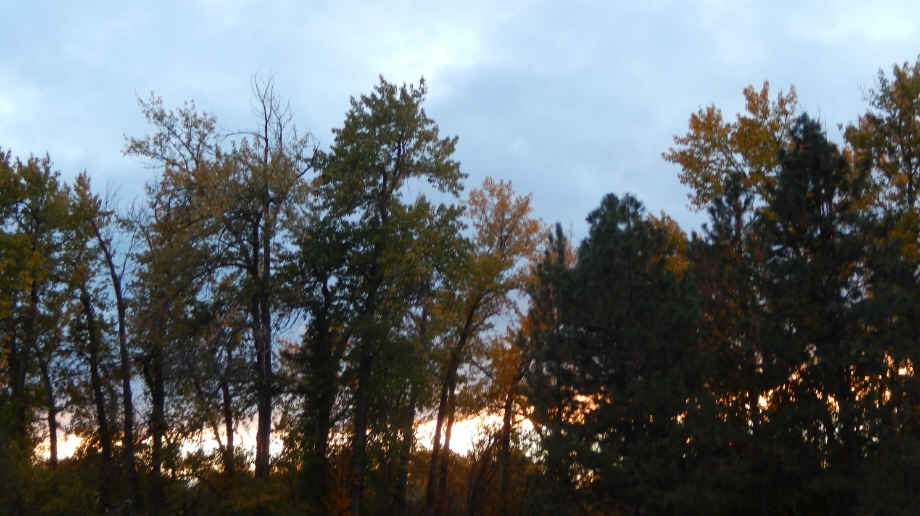 When the leaves are all gone and the sky is clear the top of Mt Rainier can be seen in the low-center of that view. Mornings work best because the Sun is to the East and shining on the snow covered top.
When the leaves are all gone and the sky is clear the top of Mt Rainier can be seen in the low-center of that view. Mornings work best because the Sun is to the East and shining on the snow covered top.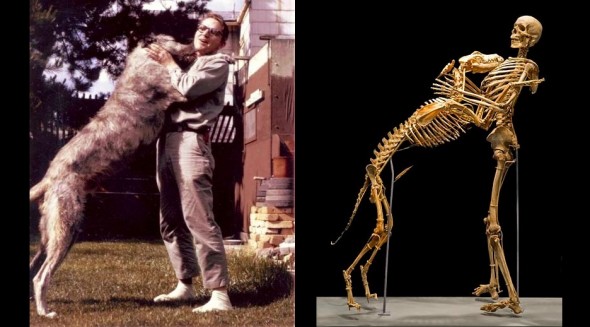 This morning, I commented on line to the article. Here is the content of my message:
This morning, I commented on line to the article. Here is the content of my message: 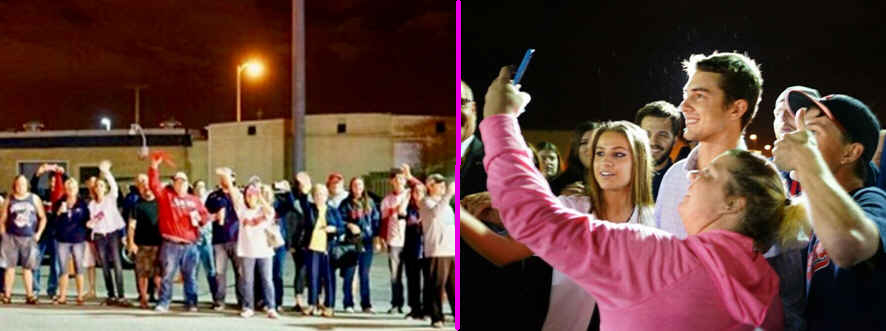 Left-Peggy Hultquist, in yellow blouse and jeans by the light pole, and on the right photo, she is standing behind the guy in a suit on the left – close to the action. She couldn’t get a good picture, but this shows Ryan Merritt well.
Left-Peggy Hultquist, in yellow blouse and jeans by the light pole, and on the right photo, she is standing behind the guy in a suit on the left – close to the action. She couldn’t get a good picture, but this shows Ryan Merritt well. John made it at dusk, in time to feed the horses with available light.
John made it at dusk, in time to feed the horses with available light. 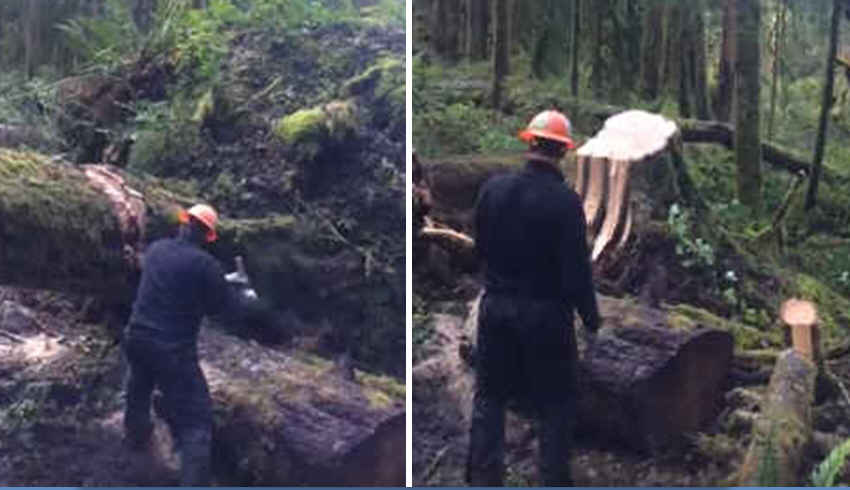 Steve, the cross-cut sawyer, before left, & after the fall returns the stump up to standing with the root ball below.
Steve, the cross-cut sawyer, before left, & after the fall returns the stump up to standing with the root ball below.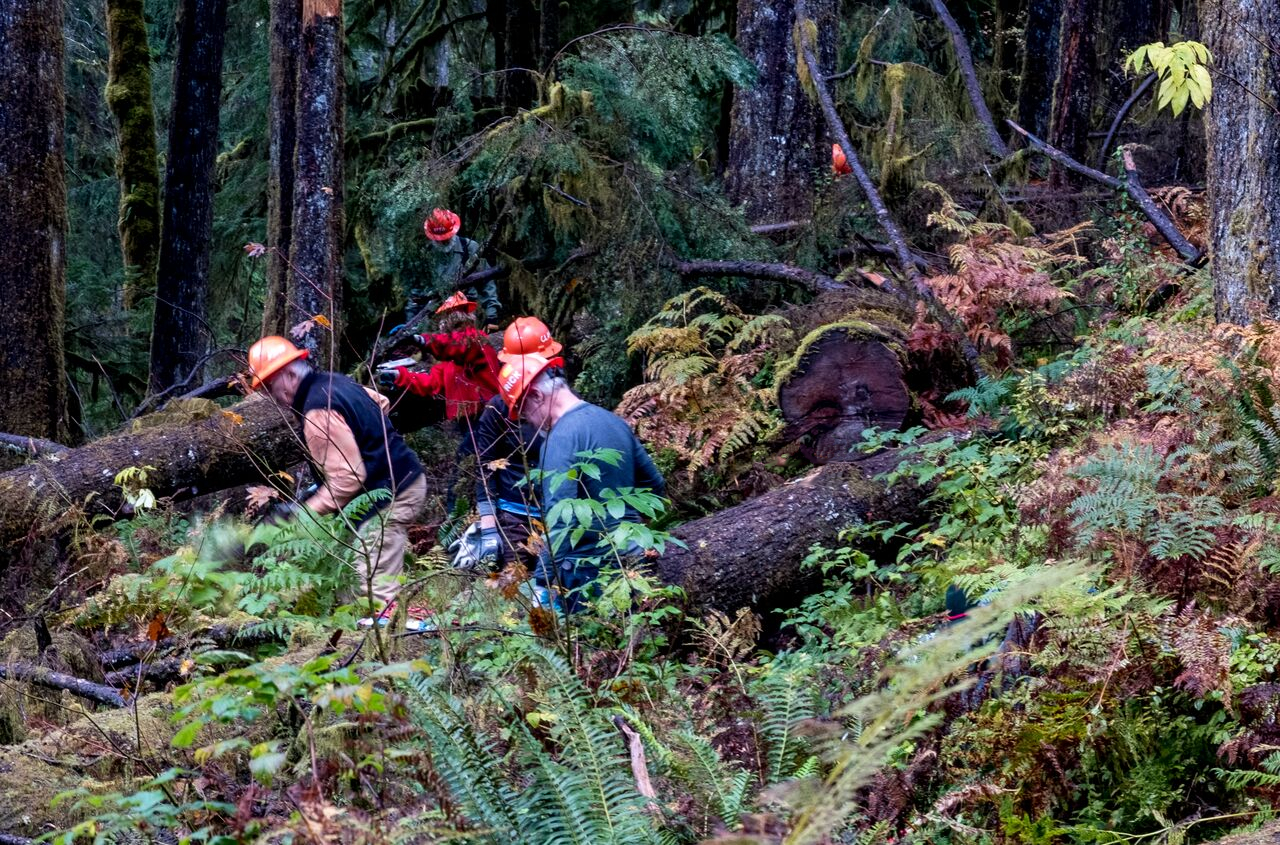 Two trees and 2 teams of 3 each. At the start, the crews had to clear brush to get access to the trees and to make the work site safe. They remove limbs so afterward the cut pieces can be rolled, and there won’t be anything to snag an arm or leg. Two other teams are not seen here.
Two trees and 2 teams of 3 each. At the start, the crews had to clear brush to get access to the trees and to make the work site safe. They remove limbs so afterward the cut pieces can be rolled, and there won’t be anything to snag an arm or leg. Two other teams are not seen here. 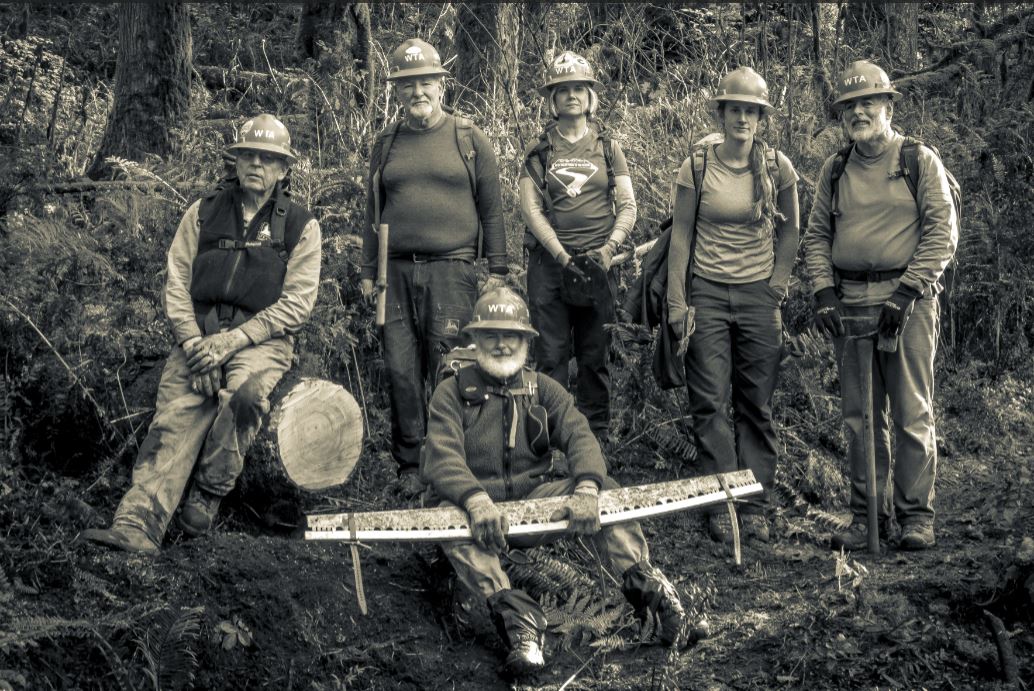 John is on the tree, Rick beside him and their leader is Claire, 2nd from right. The other three are the crew in the background of the first photo. When the sawing is done, the handle(s) are removed and a protective guard is put over the sharp parts.
John is on the tree, Rick beside him and their leader is Claire, 2nd from right. The other three are the crew in the background of the first photo. When the sawing is done, the handle(s) are removed and a protective guard is put over the sharp parts.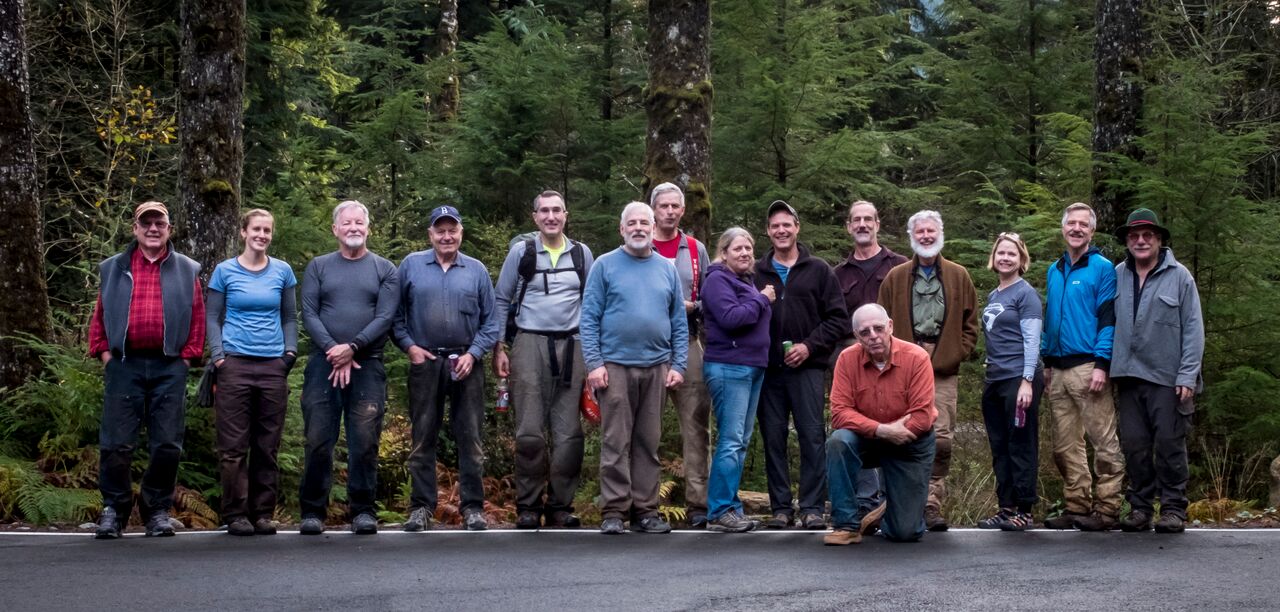 On the left with the red shirt is the +1, next to Claire. That is Bud Silliman, our saw sharpener and handles guy. The weather was nice so he came out to see if the teams were handling the saws with proper respect. If he doesn’t do his sharpening well, the sawyers struggle, and the saws don’t sing.
On the left with the red shirt is the +1, next to Claire. That is Bud Silliman, our saw sharpener and handles guy. The weather was nice so he came out to see if the teams were handling the saws with proper respect. If he doesn’t do his sharpening well, the sawyers struggle, and the saws don’t sing. This was early on with John picking and then I joined in awhile.
This was early on with John picking and then I joined in awhile.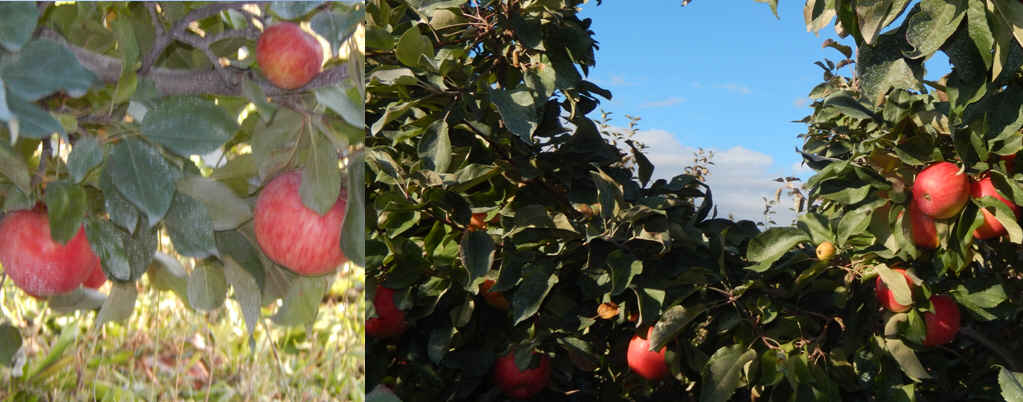 Here you see Honeycrisp very close to the ground and with white powder on them to protect against sunburn, which makes a dark orange skin injury. I should have taken a photo of that phenomenon.
Here you see Honeycrisp very close to the ground and with white powder on them to protect against sunburn, which makes a dark orange skin injury. I should have taken a photo of that phenomenon.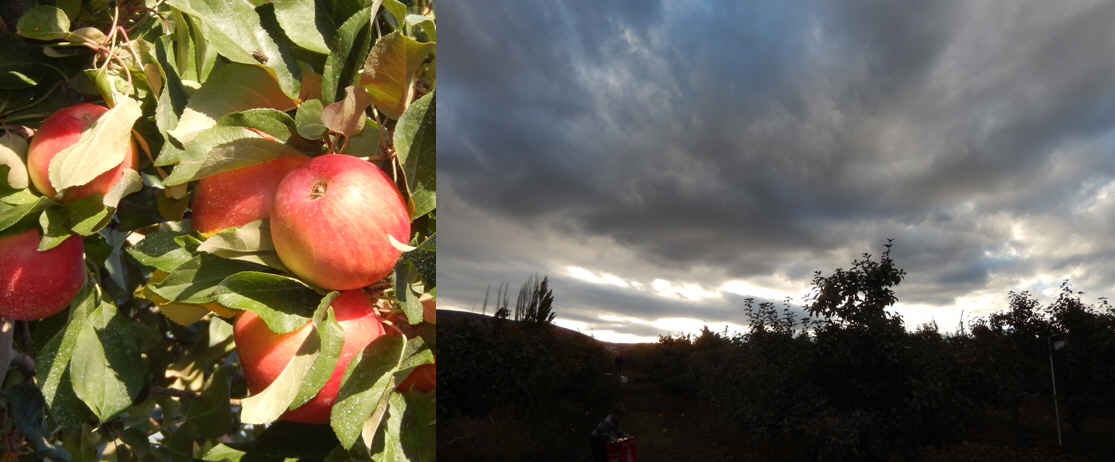 These were taken on my walk back to the house with Michael, age 5. The western clouds were rather foreboding, but John and the others picking from part of the orchard I had been, moved to where the Galas were, and picked a few boxes of them (probably John will use for making nice red applesauce). They did not get rained on. We had been scheduled to pick yesterday, but the rains came instead and kept us away.
These were taken on my walk back to the house with Michael, age 5. The western clouds were rather foreboding, but John and the others picking from part of the orchard I had been, moved to where the Galas were, and picked a few boxes of them (probably John will use for making nice red applesauce). They did not get rained on. We had been scheduled to pick yesterday, but the rains came instead and kept us away. We began on a walk through the woods behind our house (northwest side of our property). The prior owner had a big “pond” bulldozed behind the house and next to the creek. When the water is high in the creek, the pond has water; otherwise it is dry and we call it Jay’s folly. It grows a lot of brush and trees (fuel) close to the house. We talked about that.
We began on a walk through the woods behind our house (northwest side of our property). The prior owner had a big “pond” bulldozed behind the house and next to the creek. When the water is high in the creek, the pond has water; otherwise it is dry and we call it Jay’s folly. It grows a lot of brush and trees (fuel) close to the house. We talked about that.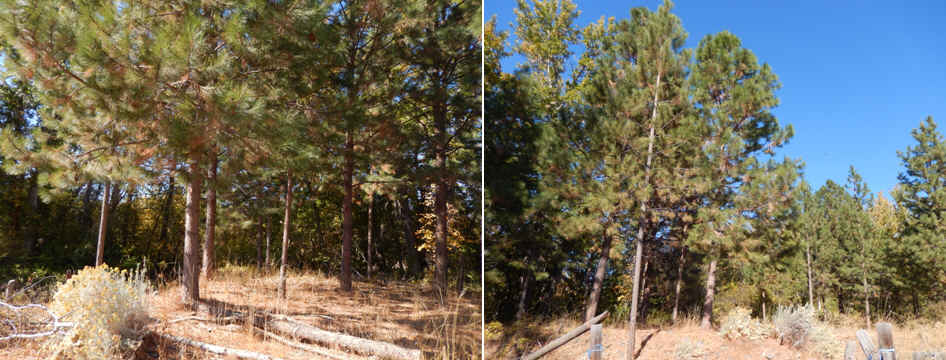 These are behind our house. She discussed the spacing desired between the trees. John has been working on that, because we have attended a fire-wise workshop, have the literature, and know the recommendations.
These are behind our house. She discussed the spacing desired between the trees. John has been working on that, because we have attended a fire-wise workshop, have the literature, and know the recommendations.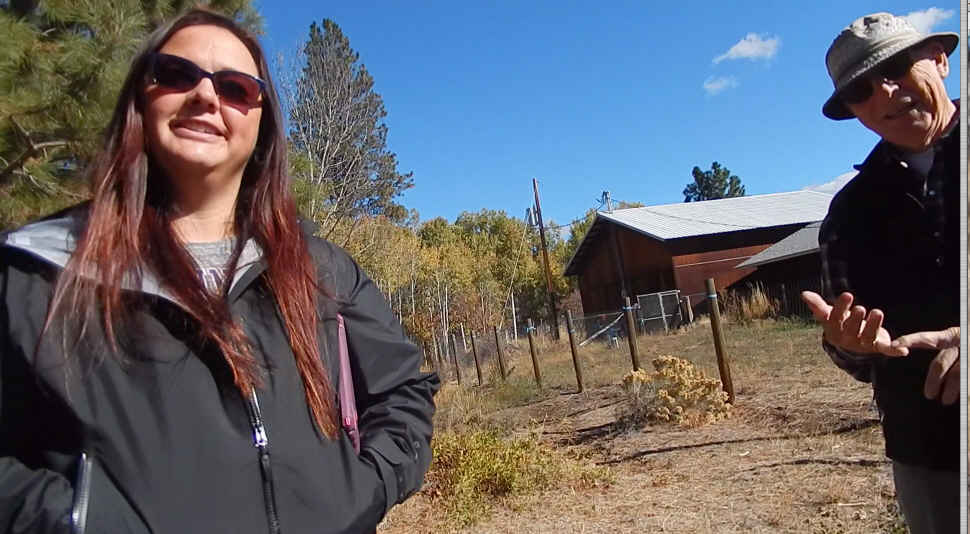 Rose talking with me and John about the rules of the clearing for fire-wise protection around our house and creek, and the possible need to ask for an amendment to the floodplain map. This is called submitting a Letter of Map Amendment (LOMA).
Rose talking with me and John about the rules of the clearing for fire-wise protection around our house and creek, and the possible need to ask for an amendment to the floodplain map. This is called submitting a Letter of Map Amendment (LOMA). The left shows a dead tree next to the creek but not close enough to hit the house if it falls, and the right photo shows Tamaracks too close to our house that need to be removed. We planted them for shade and because we like them. Behind them but a little farther away from the house are Carpathian walnut trees (see below). We planted many trees (spruce, pines [Austrian and Pondersosa]) lining our driveway that we obtained from the tree and plant sale at the KCCD, where John once volunteered. John, via KCCD, also obtained the Carpathian walnut trees that are not native to here, and so not part of the plant sale. The nursery, in Plains, Montana, does not usually sell to retail customers.
The left shows a dead tree next to the creek but not close enough to hit the house if it falls, and the right photo shows Tamaracks too close to our house that need to be removed. We planted them for shade and because we like them. Behind them but a little farther away from the house are Carpathian walnut trees (see below). We planted many trees (spruce, pines [Austrian and Pondersosa]) lining our driveway that we obtained from the tree and plant sale at the KCCD, where John once volunteered. John, via KCCD, also obtained the Carpathian walnut trees that are not native to here, and so not part of the plant sale. The nursery, in Plains, Montana, does not usually sell to retail customers.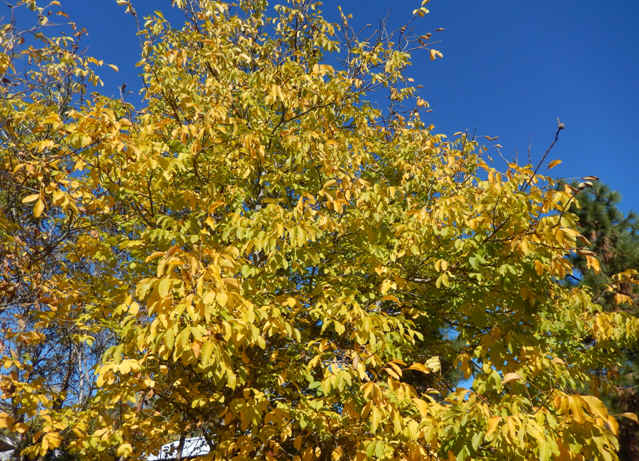 Our Carpathian Walnut trees. On their tour Rose and Lance were happy to see all the results of the Roy Bach Plant sale through the years; now suspended, maybe temporarily.
Our Carpathian Walnut trees. On their tour Rose and Lance were happy to see all the results of the Roy Bach Plant sale through the years; now suspended, maybe temporarily.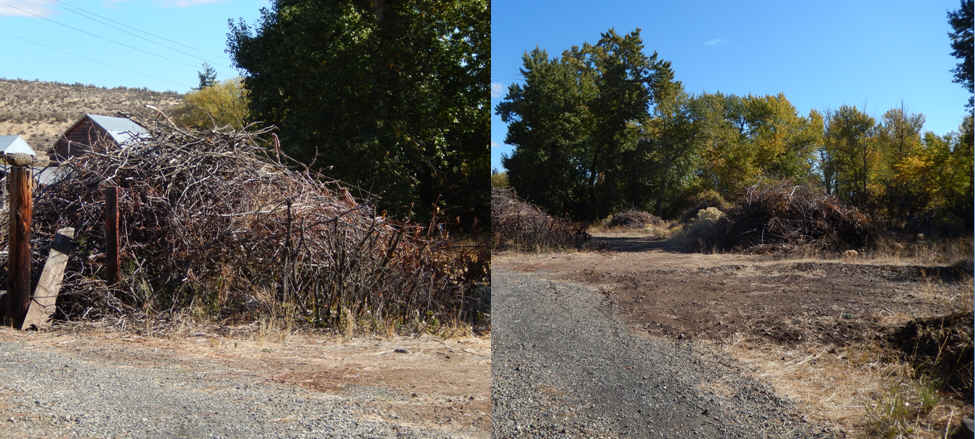 These brush piles are on the NE part of our property. The left photo one shows our neighbors’ barns in the background, so this is near the end of our driveway. The right photo shows our driveway in the foreground and 3 brush piles behind; in addition, the entrance to our pasture and the back of our house, shows a new access drive we put in for firefighting reasons to give ingress and exit for a Mini-Pumper or Quick Attack Units.
These brush piles are on the NE part of our property. The left photo one shows our neighbors’ barns in the background, so this is near the end of our driveway. The right photo shows our driveway in the foreground and 3 brush piles behind; in addition, the entrance to our pasture and the back of our house, shows a new access drive we put in for firefighting reasons to give ingress and exit for a Mini-Pumper or Quick Attack Units. 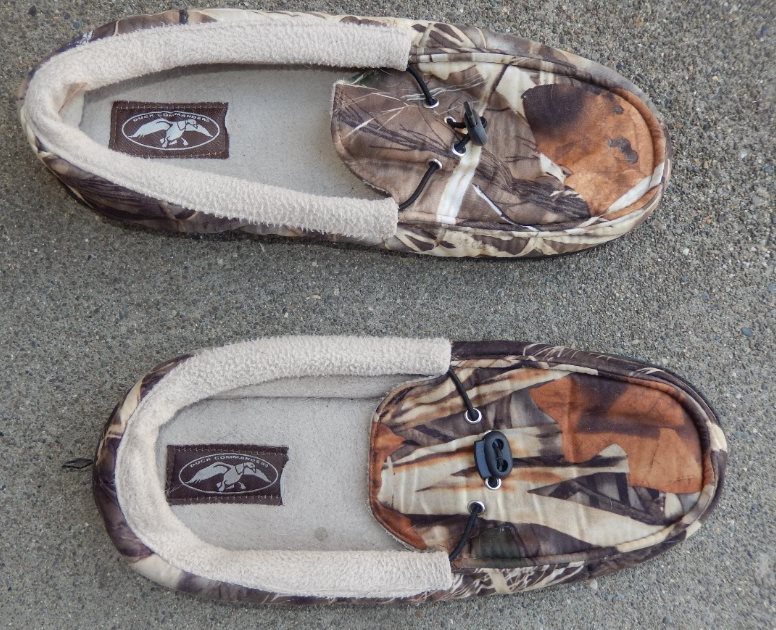 I tried them but they were too big, even with bulky socks. That’s why we gave them away.
I tried them but they were too big, even with bulky socks. That’s why we gave them away. Lori Rome and the video she sent (ending). Lori is famous for this:
Lori Rome and the video she sent (ending). Lori is famous for this: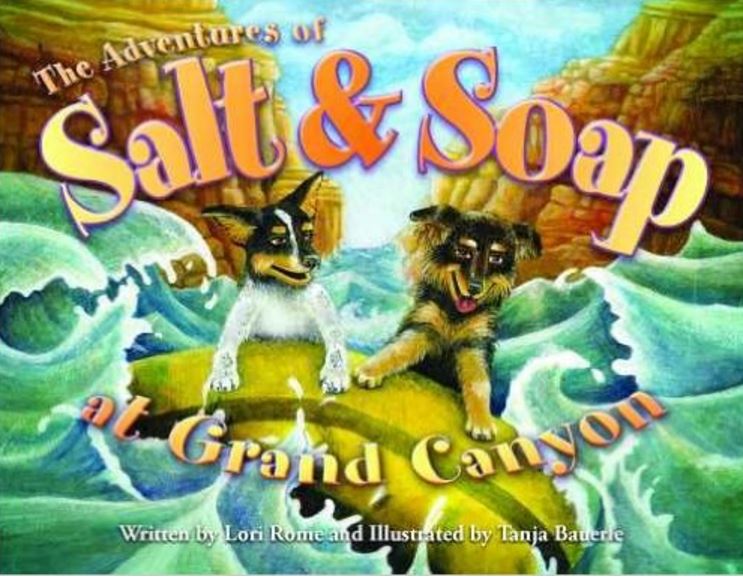
 Still view of the winds off the coast and inland to the western U.S.
Still view of the winds off the coast and inland to the western U.S.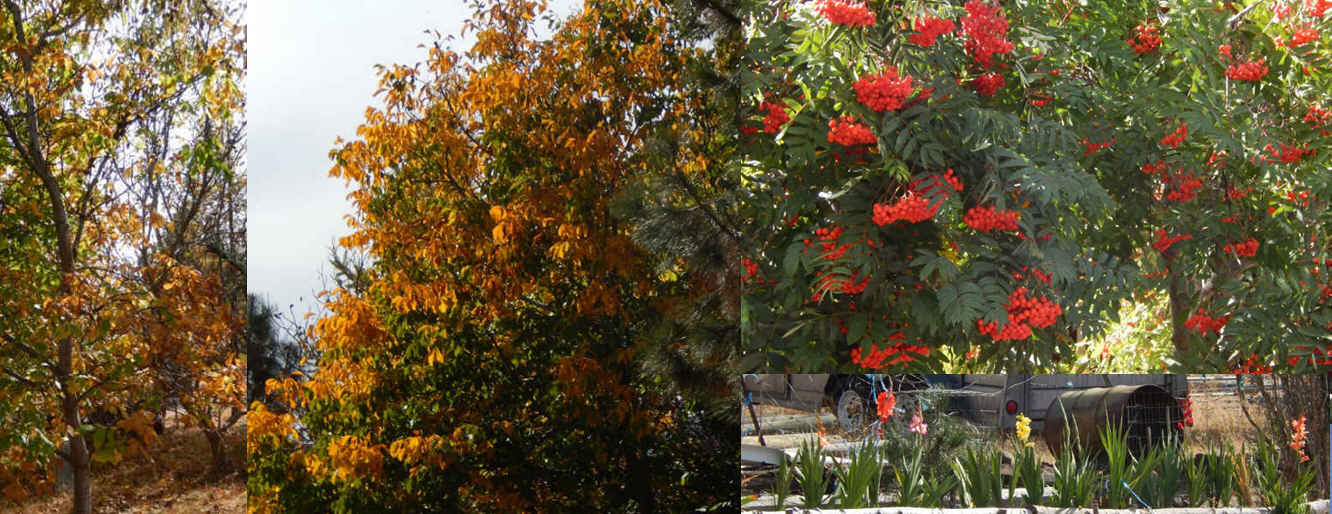 Yellow Carpathian walnut, Red Mountain Ash, and bottom right – a few different gladioli in colorful bloom.
Yellow Carpathian walnut, Red Mountain Ash, and bottom right – a few different gladioli in colorful bloom.  Left is the Black Walnut tree with an old unsplit Cottonwood round that allows a table for the Douglas squirrel to feast on the walnuts. I picked up one off the ground and added to his plate. In the middle is Lemon, one of our feral cats, looking toward his own flower “bed.” John planted a 4X4 ft. pallet sided box with daisy seeds, and there is a wire fence with an opening. Lemon climbs in the opening and uses the surface to roll and rest on. One plant survived, started with one bloom, and now has several.
Left is the Black Walnut tree with an old unsplit Cottonwood round that allows a table for the Douglas squirrel to feast on the walnuts. I picked up one off the ground and added to his plate. In the middle is Lemon, one of our feral cats, looking toward his own flower “bed.” John planted a 4X4 ft. pallet sided box with daisy seeds, and there is a wire fence with an opening. Lemon climbs in the opening and uses the surface to roll and rest on. One plant survived, started with one bloom, and now has several.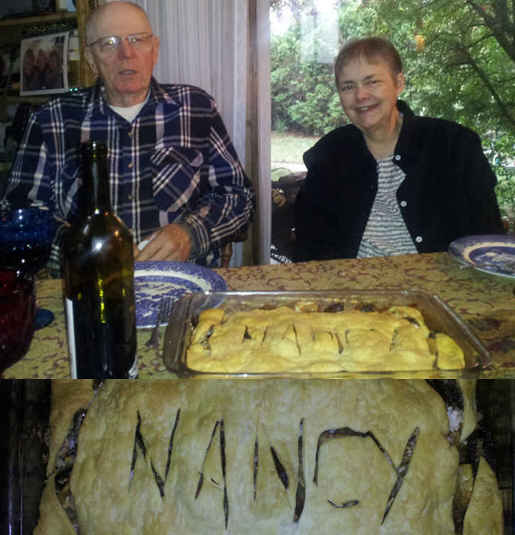 Color is better in the top photo but my name gets lost. John wore a shirt with colors to match her plates. How did he know? Coincidence. I think not. I still had on my music notes shirt from playing this afternoon.
Color is better in the top photo but my name gets lost. John wore a shirt with colors to match her plates. How did he know? Coincidence. I think not. I still had on my music notes shirt from playing this afternoon.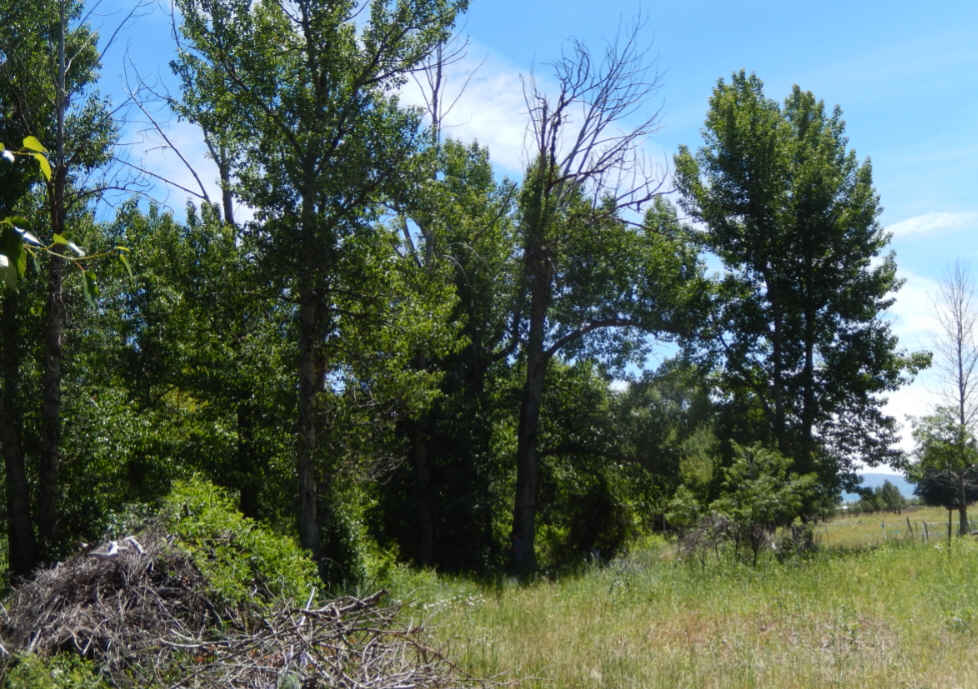 Some of the smaller brush piles near the northeast of our property. John started this brushing years ago and the first piles were built with inside open spaces for wildlife hideouts. Quail find them useful. Early clearing was to open up some space, make a trail from one part to another, and clean up rotting trunks and limbs of fallen trees. These were on the southwest (swamp) end of our acreage, and has continued all around now. It provides good quail habitat, but now there is too much and some of the piles need to go. Chipping and removal or spreading is the only safe way. Burning is not good and the county only allows small piles to be burned.
Some of the smaller brush piles near the northeast of our property. John started this brushing years ago and the first piles were built with inside open spaces for wildlife hideouts. Quail find them useful. Early clearing was to open up some space, make a trail from one part to another, and clean up rotting trunks and limbs of fallen trees. These were on the southwest (swamp) end of our acreage, and has continued all around now. It provides good quail habitat, but now there is too much and some of the piles need to go. Chipping and removal or spreading is the only safe way. Burning is not good and the county only allows small piles to be burned.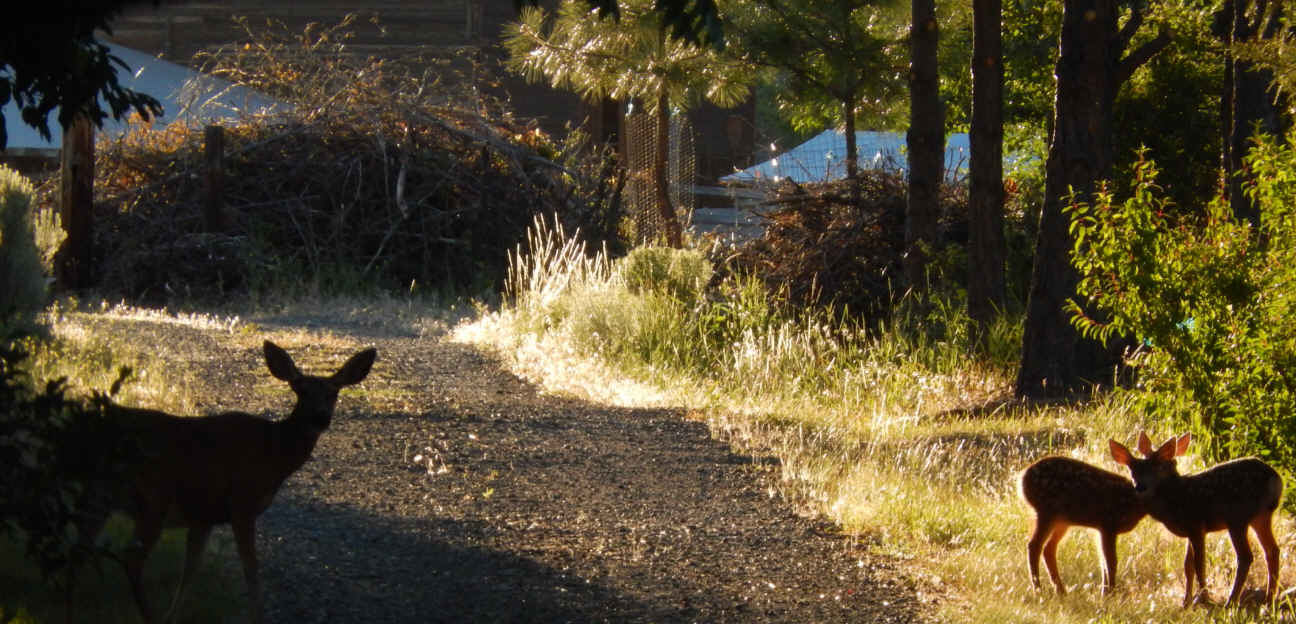 This older picture shows an interesting early morning photo with two large brush piles behind the doe and her baby fawns. Those piles are are of material cut close to the house and moved to a safer spot.
This older picture shows an interesting early morning photo with two large brush piles behind the doe and her baby fawns. Those piles are are of material cut close to the house and moved to a safer spot. 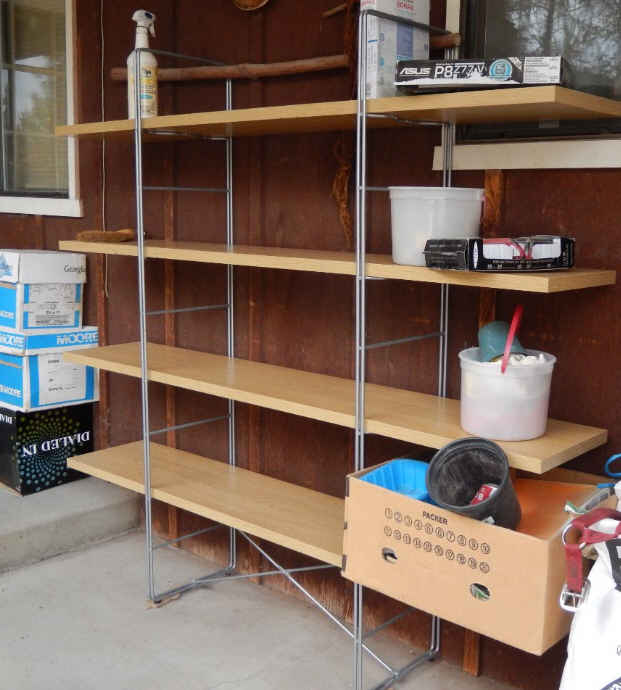 This is cluttered now, but it will make a nice addition for sorting as well as using temporarily for unloading at the front door.
This is cluttered now, but it will make a nice addition for sorting as well as using temporarily for unloading at the front door.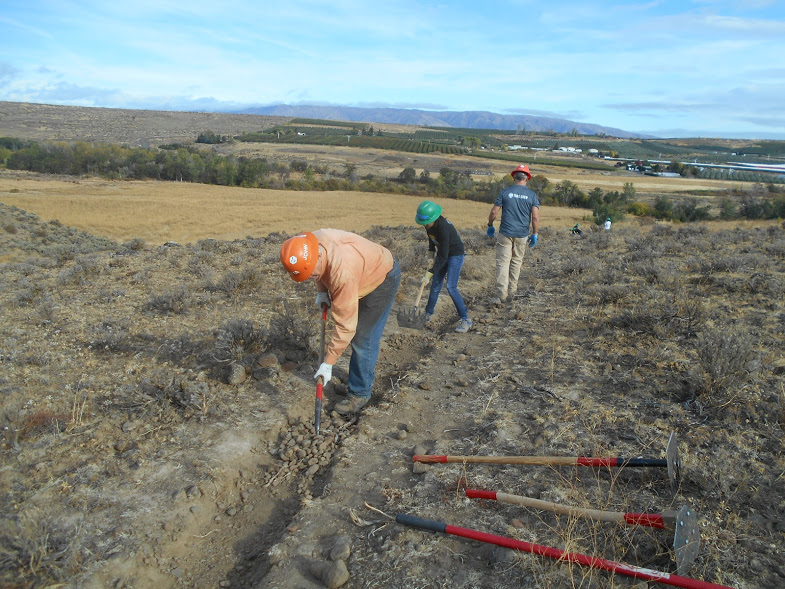 A massive rain shower in May removed the small soil grains and left only rocks in the trail. Hikers moved to the edge and destroyed the vegetation there. This trip was a quick fix. Next year the trail will be widened some (on the right here) but the work is slow. The thin soil is hard and rocky and on top of a lava flow that is millions of years old. Very little rain is the norm here so only if they are very unlucky will this happen again.
A massive rain shower in May removed the small soil grains and left only rocks in the trail. Hikers moved to the edge and destroyed the vegetation there. This trip was a quick fix. Next year the trail will be widened some (on the right here) but the work is slow. The thin soil is hard and rocky and on top of a lava flow that is millions of years old. Very little rain is the norm here so only if they are very unlucky will this happen again.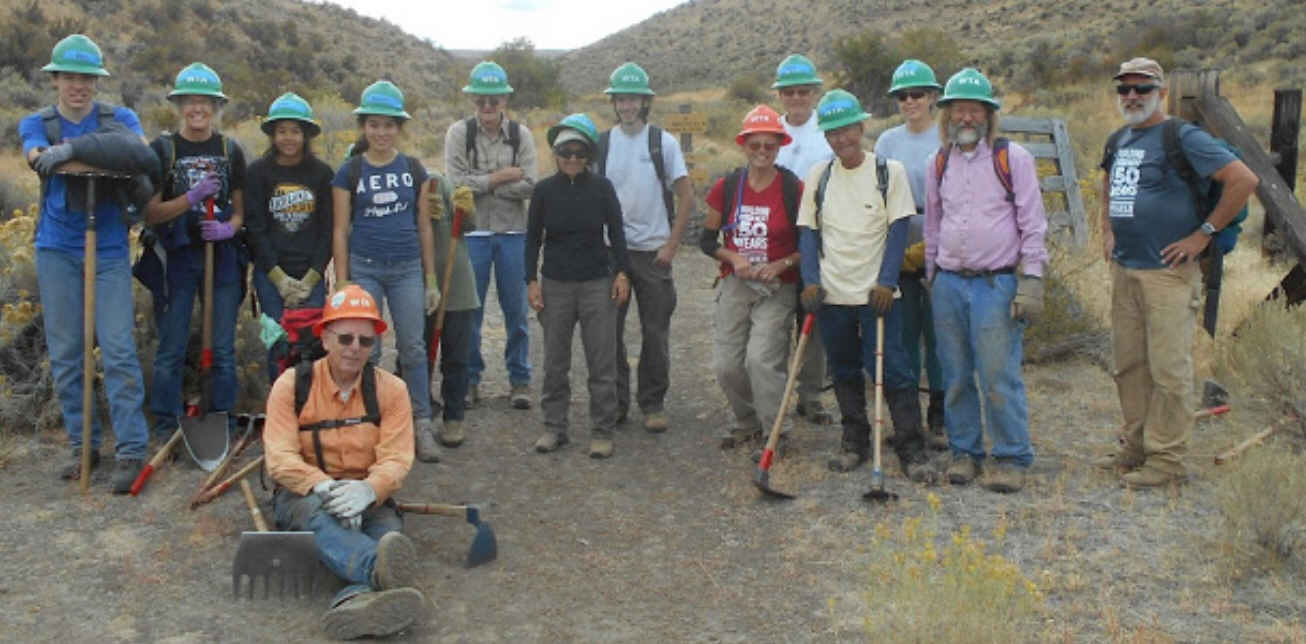 Bill is on the far right without his hat. Chris Baldini (orange hat & red shirt) drove over from Spokane.
Bill is on the far right without his hat. Chris Baldini (orange hat & red shirt) drove over from Spokane.  Above is the after shot of John’s ingenuity in loading the piece of furniture which was unable to be disassembled (shelves were fastened to the metal). It was too wide in both directions to push into the back of the pickup with the canopy attached. Thankfully, we have an unusual canopy that has side windows that can be raised, as seen in the right photo above. That allowed John to push and tug it on an angle and then reach in through the window to prop the shelving on the top of the pallet he brought along.
Above is the after shot of John’s ingenuity in loading the piece of furniture which was unable to be disassembled (shelves were fastened to the metal). It was too wide in both directions to push into the back of the pickup with the canopy attached. Thankfully, we have an unusual canopy that has side windows that can be raised, as seen in the right photo above. That allowed John to push and tug it on an angle and then reach in through the window to prop the shelving on the top of the pallet he brought along.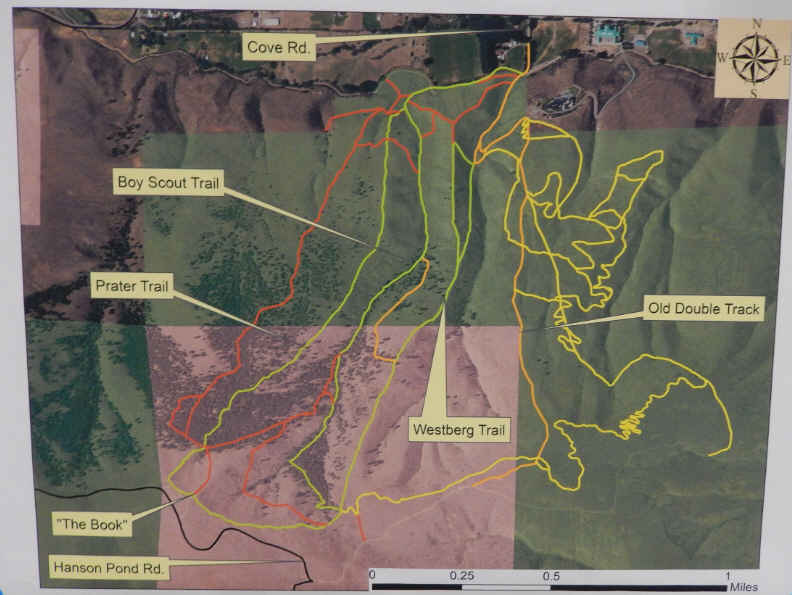 They displayed this map in two places on the wall that evening, and it was in the presentation as well. “The Book” is a spiral notebook in an ammo can meant for hikers to jot thoughts, whatever those might be. Prater and Westberg (hikers) and others would “train” on these trails and carry a rock or 2 or 3 from Cove Road (to the north) up the hill and deposit the treasure in a pile at the top. Many years ago John carried a chunk of Idaho Quartzite and added to the jumble. Like this:
They displayed this map in two places on the wall that evening, and it was in the presentation as well. “The Book” is a spiral notebook in an ammo can meant for hikers to jot thoughts, whatever those might be. Prater and Westberg (hikers) and others would “train” on these trails and carry a rock or 2 or 3 from Cove Road (to the north) up the hill and deposit the treasure in a pile at the top. Many years ago John carried a chunk of Idaho Quartzite and added to the jumble. Like this: Ten thousand years from now someone will find this hodgepodge and wonder.
Ten thousand years from now someone will find this hodgepodge and wonder. 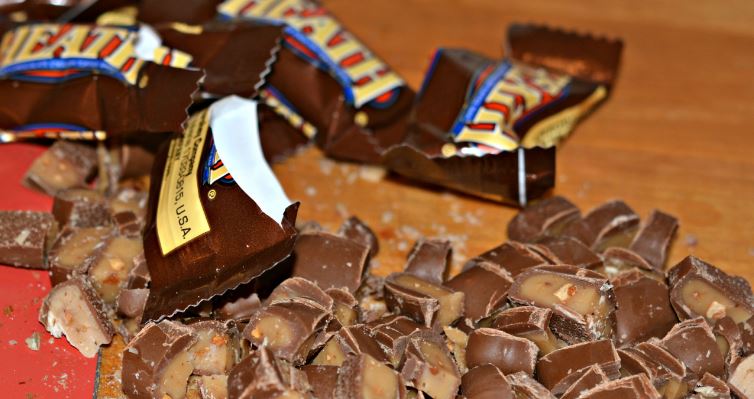 What a feast. We were ready for exercise bingo. Prizes given at the end were three movies on DVD.
What a feast. We were ready for exercise bingo. Prizes given at the end were three movies on DVD. 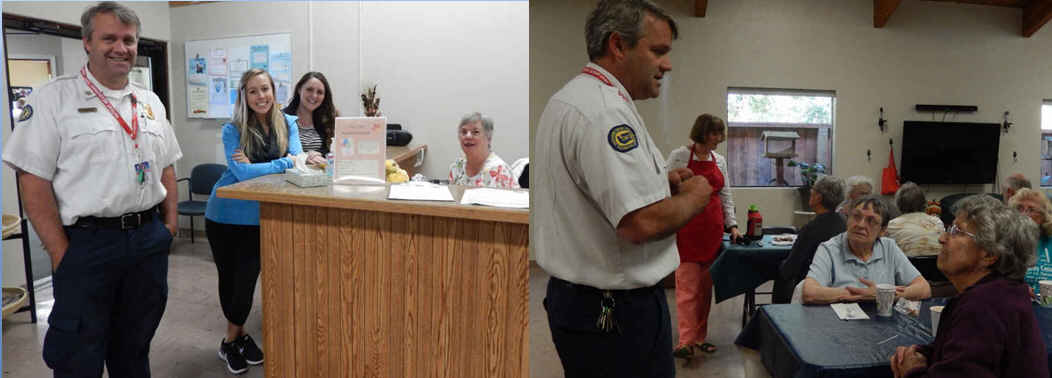 Rich Elliott, AmeriCorps gals: Megan & Lauren, and Tina on the left; Rich and Katrina Douglas (AAC Director) visiting with AAC members.
Rich Elliott, AmeriCorps gals: Megan & Lauren, and Tina on the left; Rich and Katrina Douglas (AAC Director) visiting with AAC members.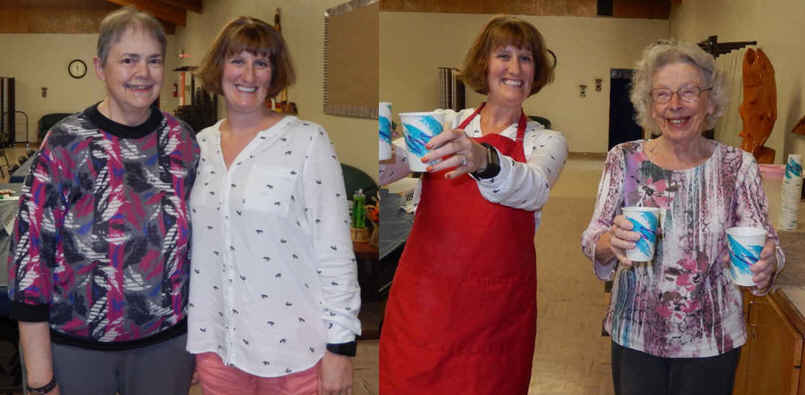 Collage of Nancy with Katrina and she with Gloria Swanson. Gloria and I went as a team, Wednesday to SAIL, and Friday to this presentation, lunch, and bingo exercise.
Collage of Nancy with Katrina and she with Gloria Swanson. Gloria and I went as a team, Wednesday to SAIL, and Friday to this presentation, lunch, and bingo exercise.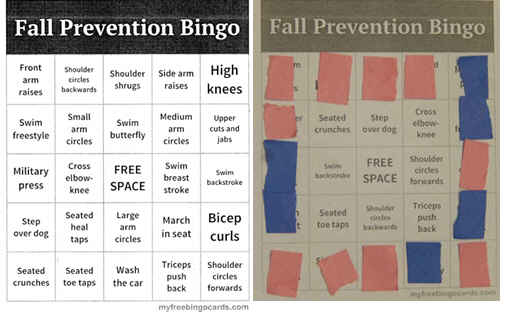 Above is the card used for bingo. As each exercise is called, each person had to do it, and cover the space. We did a couple of regular bingos (lines in different directions), a T in any direction, and a frame, as above (I won that one). Winners got a couple of raffle tickets.
Above is the card used for bingo. As each exercise is called, each person had to do it, and cover the space. We did a couple of regular bingos (lines in different directions), a T in any direction, and a frame, as above (I won that one). Winners got a couple of raffle tickets.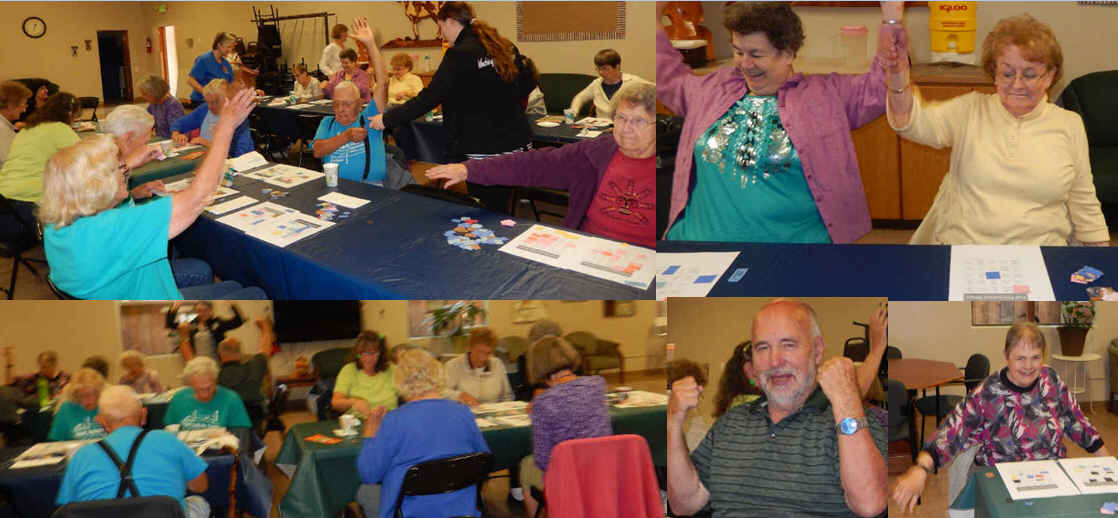 Top left Lauren is handing a winning ticket to Pat Carney in the blue tee shirt. Bottom right, Gary demos Bicep Curls, and I’m doing some sort of swimming stroke on the far right. Erica took my camera to take a few pictures.
Top left Lauren is handing a winning ticket to Pat Carney in the blue tee shirt. Bottom right, Gary demos Bicep Curls, and I’m doing some sort of swimming stroke on the far right. Erica took my camera to take a few pictures. Katrina, Chloe (with her very small violin), Bobbie with the Junior Jammers. Note, Katrina is a lefty fiddler.
Katrina, Chloe (with her very small violin), Bobbie with the Junior Jammers. Note, Katrina is a lefty fiddler.
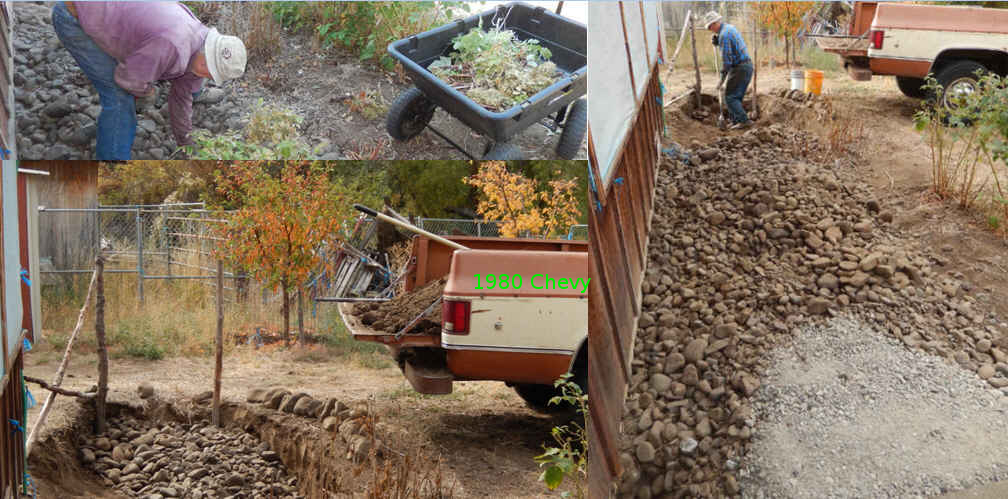 Upper left shows the removal of twice sprayed raspberries (hard to kill); lower left is actually the final shot today with dirt removed into the back of the pickup, and rocks deposited into the path’s base. The right is this morning and shows the gravel sloping access to the patio. The white gravel is repurposed crushed concrete – a bit dusty until rained on a few times. The gravel will eventually cover the rocks, and extend at least 12 feet from the house. We had a small lunch and continued working after taking a few more pictures outside. The original Raspberry plants were put under the drip line but a few are still there to the right of the rocks.
Upper left shows the removal of twice sprayed raspberries (hard to kill); lower left is actually the final shot today with dirt removed into the back of the pickup, and rocks deposited into the path’s base. The right is this morning and shows the gravel sloping access to the patio. The white gravel is repurposed crushed concrete – a bit dusty until rained on a few times. The gravel will eventually cover the rocks, and extend at least 12 feet from the house. We had a small lunch and continued working after taking a few more pictures outside. The original Raspberry plants were put under the drip line but a few are still there to the right of the rocks.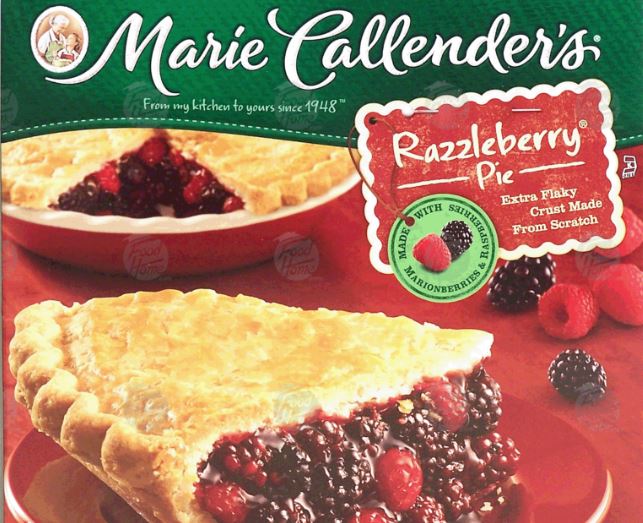 And now, I have to get this on a jump drive to take to his computer.
And now, I have to get this on a jump drive to take to his computer.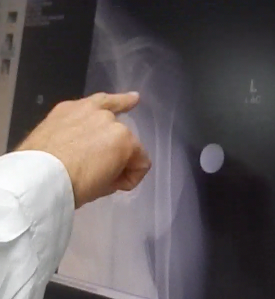 (Dr. Roux points out: You don’t have any joint space here anymore, and he continues with this question and comments.
(Dr. Roux points out: You don’t have any joint space here anymore, and he continues with this question and comments.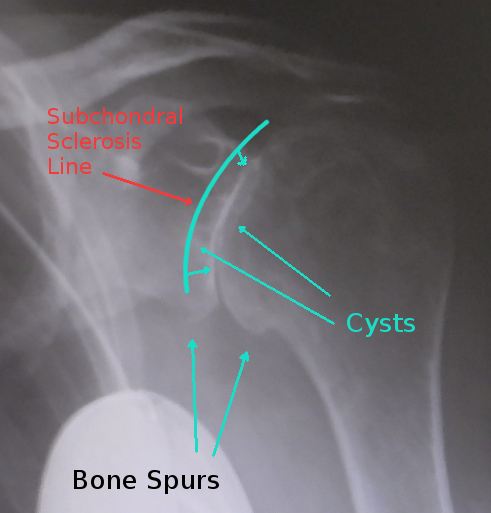
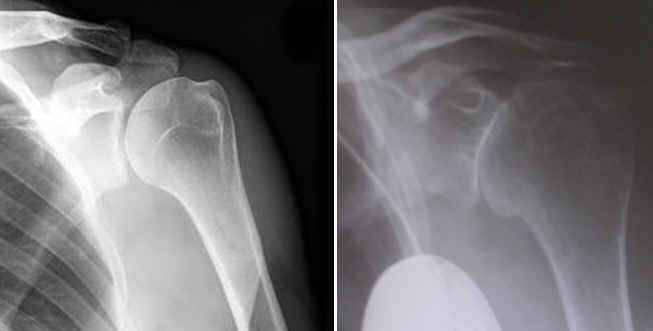 The left image is a normal shoulder I took from the web (from an Australian doctor’s explanation of shoulder arthritis). The right image is my left shoulder from the 9-19-16 X-ray. The big white spot in the lower left of mine is a metal ball hung around my neck for scale and density measurements. My image shows the obliterated joint space and the flattened head of the humerus bone on the bone of my socket. Note also the bone spurs protruding from the bottom sides of the two bones.
The left image is a normal shoulder I took from the web (from an Australian doctor’s explanation of shoulder arthritis). The right image is my left shoulder from the 9-19-16 X-ray. The big white spot in the lower left of mine is a metal ball hung around my neck for scale and density measurements. My image shows the obliterated joint space and the flattened head of the humerus bone on the bone of my socket. Note also the bone spurs protruding from the bottom sides of the two bones.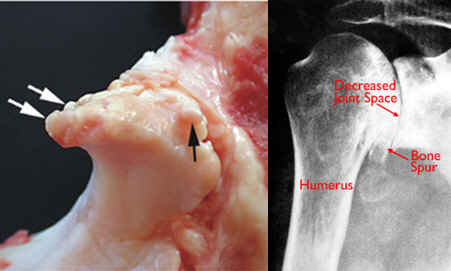 The left image is of a pig’s bone spurs (follow the arrows). The right diagram is of a human shoulder with annotations of the symptoms of osteoarthritis disease. (Osteo=bone)
The left image is of a pig’s bone spurs (follow the arrows). The right diagram is of a human shoulder with annotations of the symptoms of osteoarthritis disease. (Osteo=bone)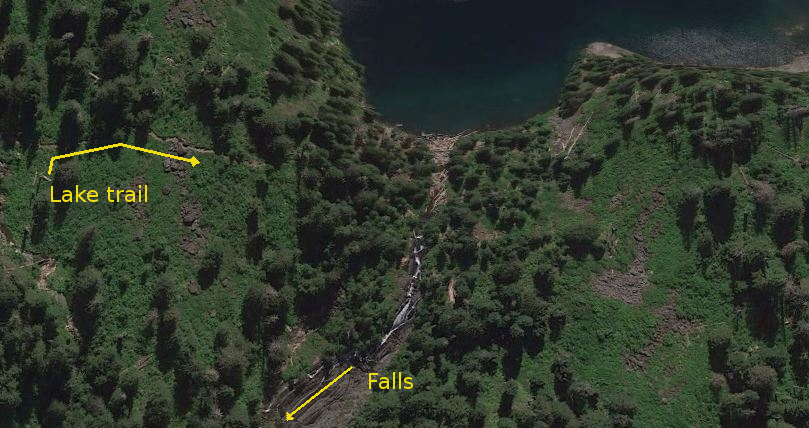 We did get some photos from today’s work party..
We did get some photos from today’s work party..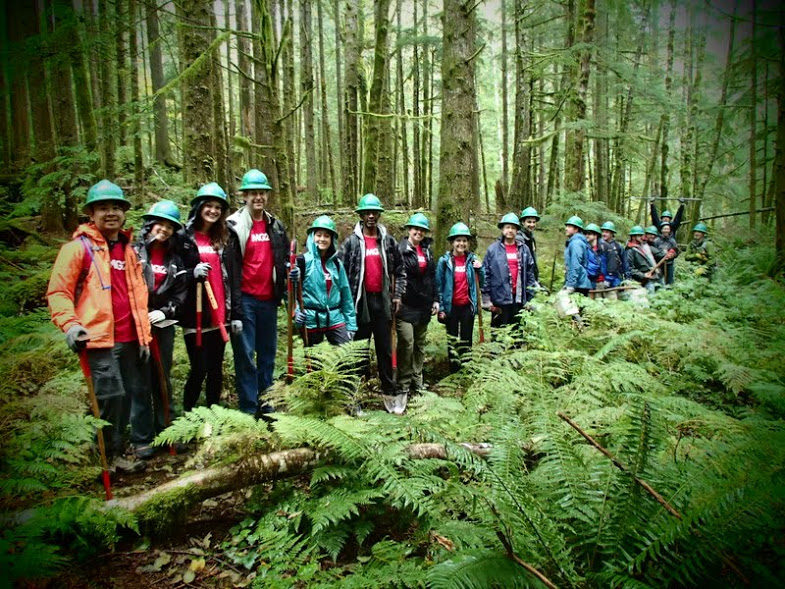 Entire volunteer group came from MG2, an architectural firm, with this bunch all in a sector that designs Costco stores.
Entire volunteer group came from MG2, an architectural firm, with this bunch all in a sector that designs Costco stores.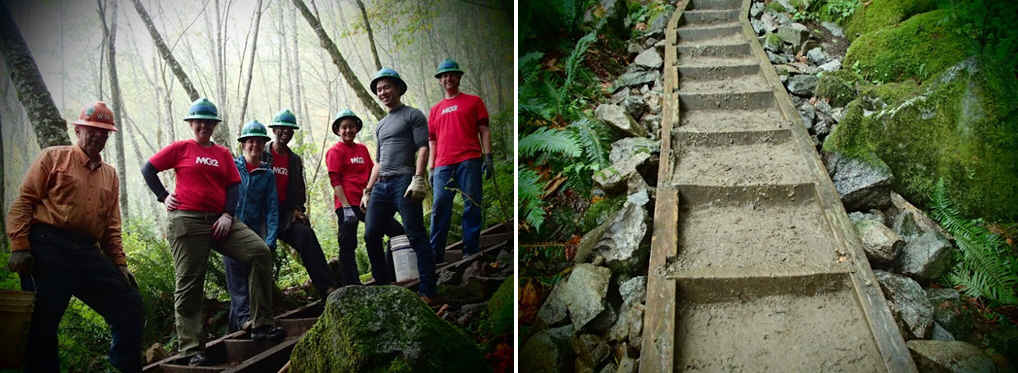 He called from Leavenworth at 4:35 and got home about 70 minutes later. We had leftovers for dinner.
He called from Leavenworth at 4:35 and got home about 70 minutes later. We had leftovers for dinner. 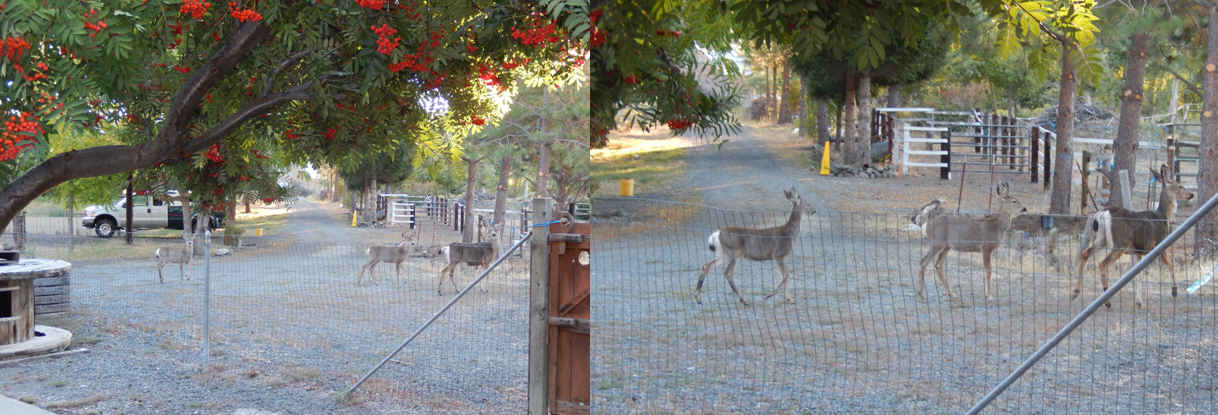 Mom out front (on the right of both photos) with twin fawns, no longer with spots.
Mom out front (on the right of both photos) with twin fawns, no longer with spots.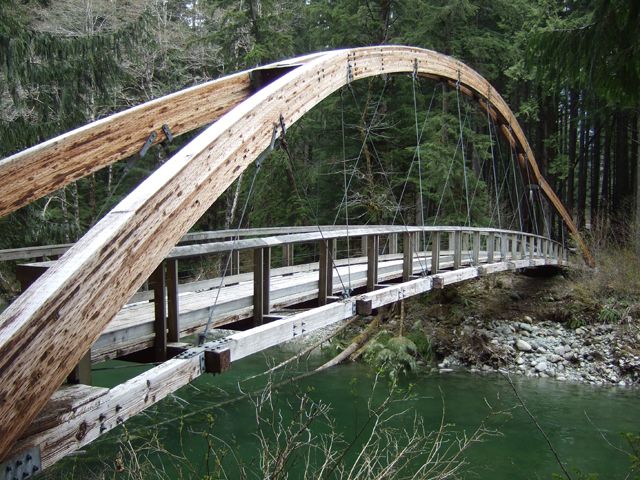 Bridge near the Middle Fork trail head.
Bridge near the Middle Fork trail head.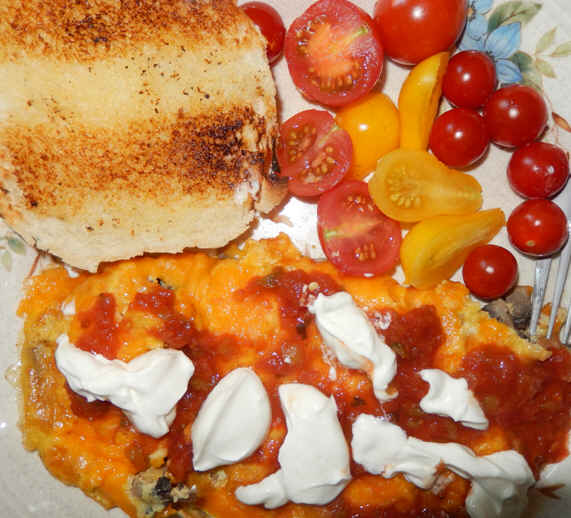 I picked up Gerald from RV Canopy Country on Dolarway just after 1:00 p.m., where he left his “new” truck to have its canopy installed. Fortunately, his son came and picked him up to take him back, because I had to go directly from music to a PT appointment on my shoulder.
I picked up Gerald from RV Canopy Country on Dolarway just after 1:00 p.m., where he left his “new” truck to have its canopy installed. Fortunately, his son came and picked him up to take him back, because I had to go directly from music to a PT appointment on my shoulder.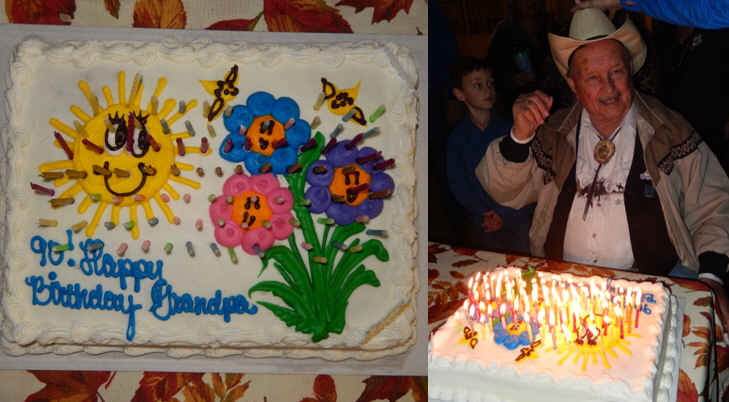 Birthday cake celebration.
Birthday cake celebration.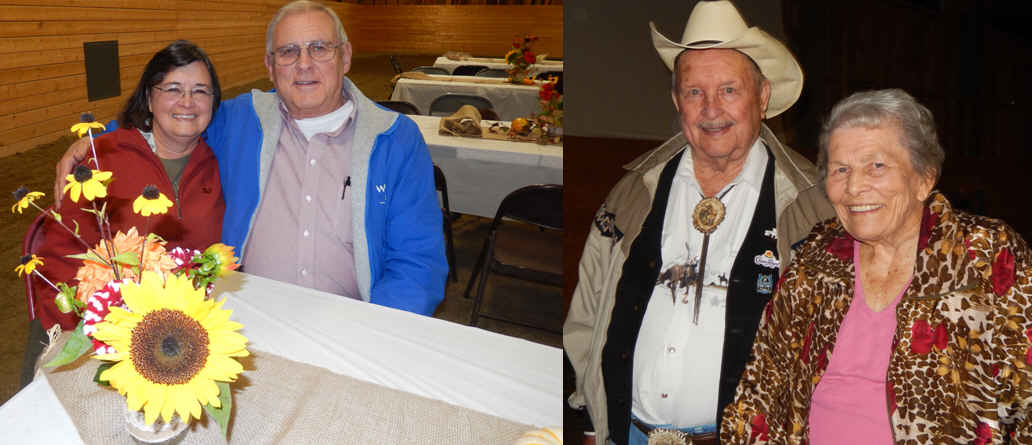 Suzy Orcutt West and Bob West and her dad and mom on the right. They had a large family of 12. Suzy we knew because Bob was my student in the 1990s (graduating from CWU Geography in 1997).
Suzy Orcutt West and Bob West and her dad and mom on the right. They had a large family of 12. Suzy we knew because Bob was my student in the 1990s (graduating from CWU Geography in 1997). 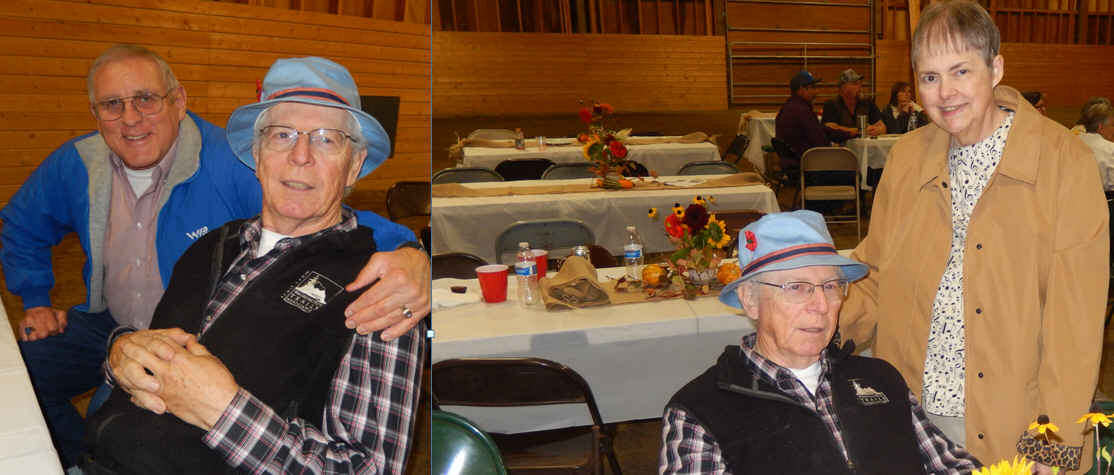 The large party was held in a barn at one of their children’s homes, on the other side of the valley. We enjoyed the Harvest Moon on the way home, but I was unable to capture it on my camera. John said I would find a better rendition on the web. I would have loved to have had what we saw surrounded by clouds.
The large party was held in a barn at one of their children’s homes, on the other side of the valley. We enjoyed the Harvest Moon on the way home, but I was unable to capture it on my camera. John said I would find a better rendition on the web. I would have loved to have had what we saw surrounded by clouds.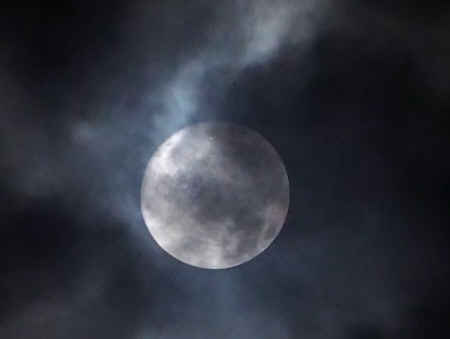
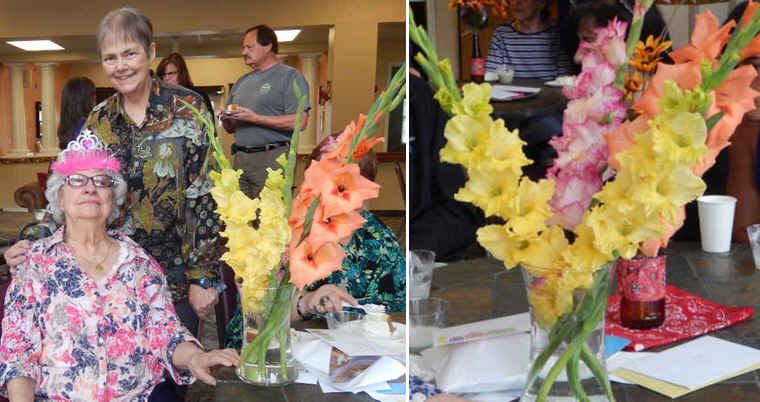 A gladiolus that matches her outfit and Tiara is not showing in the left picture of the vase. It’s behind the orange one. Look at the right photo, and see it. The Tiara was my gift from Kathryn Carlson last year on my birthday during our Buy Nothing Clothing Share. This seemed like an appropriate gift to Clare Panattoni today. The glads are in a vase given to me by Renee Moore (on the buy nothing site), just last week. I’m behind Clare. Thanks to Valerie a professional photographer at the party for taking our picture on my camera. It was a nice party her family put on for her. Gloria and I had a nice visit with a number of mutual friends there. The party was from 2:00 to 4:00, and we got there a little after it started and were near last leaving.
A gladiolus that matches her outfit and Tiara is not showing in the left picture of the vase. It’s behind the orange one. Look at the right photo, and see it. The Tiara was my gift from Kathryn Carlson last year on my birthday during our Buy Nothing Clothing Share. This seemed like an appropriate gift to Clare Panattoni today. The glads are in a vase given to me by Renee Moore (on the buy nothing site), just last week. I’m behind Clare. Thanks to Valerie a professional photographer at the party for taking our picture on my camera. It was a nice party her family put on for her. Gloria and I had a nice visit with a number of mutual friends there. The party was from 2:00 to 4:00, and we got there a little after it started and were near last leaving.  John, with a small rock in his left hand and a large rock-net (multi-person carrier) in his right, middle picture is lunch, and right photo is him with a colleague discussing the project.
John, with a small rock in his left hand and a large rock-net (multi-person carrier) in his right, middle picture is lunch, and right photo is him with a colleague discussing the project.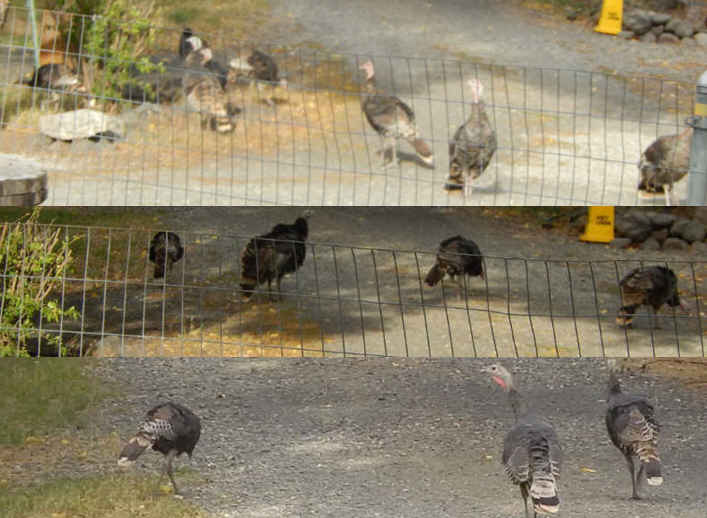 Tonight, I decided to put blackberries on John’s piece of pie (he picked them today), and I don’t like the seeds, so I put all the juice on mine and cut up one of our purple plums for my topping. This was on a piece of key lime pie.
Tonight, I decided to put blackberries on John’s piece of pie (he picked them today), and I don’t like the seeds, so I put all the juice on mine and cut up one of our purple plums for my topping. This was on a piece of key lime pie.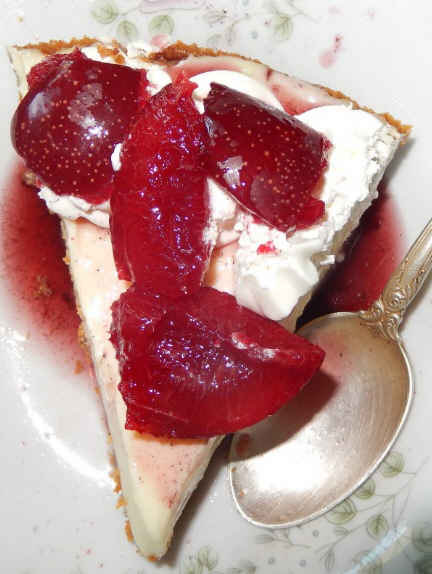
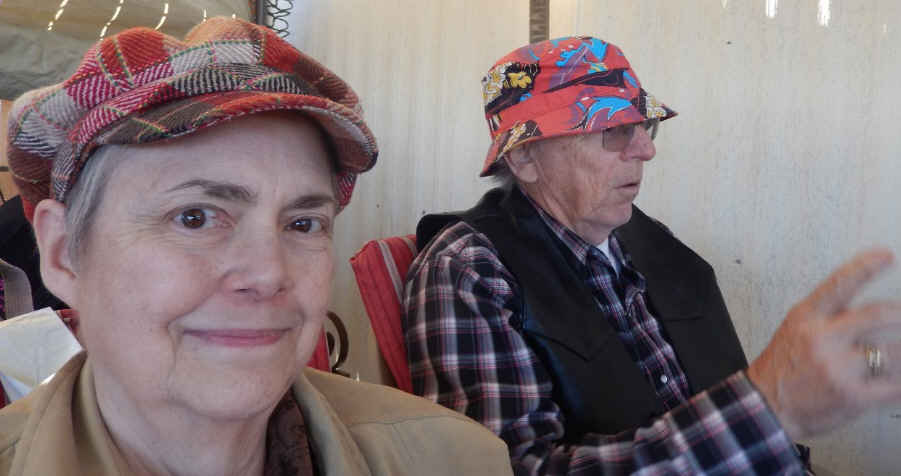 This was a selfie of the two of us, and John is talking to the lady in front of us who lives on the west side and he has visited her (to pick Blueberries) house with the groom’s mom.
This was a selfie of the two of us, and John is talking to the lady in front of us who lives on the west side and he has visited her (to pick Blueberries) house with the groom’s mom. 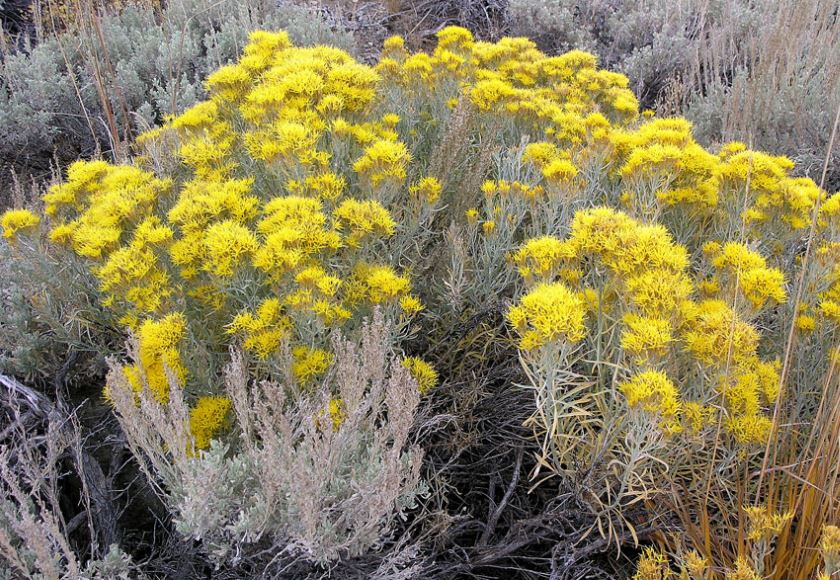 There are a few wild purple Asters blooming and some non-blooming Ragweed. The Rabbit bushes are abundant and the bees are all over them. Thus, that’s our vote.
There are a few wild purple Asters blooming and some non-blooming Ragweed. The Rabbit bushes are abundant and the bees are all over them. Thus, that’s our vote. 
 Todd is the chair of Political Science at CWU there for 20 years and wife Kathy I got to know independently through my SAIL activity class, in which she was a participant, being the caregiver for one of the older active community women of Ellensburg, Helen Wise. Small world continues in our lives. They are kayakers and learned about this event from an email I sent to my music group, which she likes to attend. They have kayaked at the Columbia and stopped by White Heron several times. They had a great time and want to join us next year as well.
Todd is the chair of Political Science at CWU there for 20 years and wife Kathy I got to know independently through my SAIL activity class, in which she was a participant, being the caregiver for one of the older active community women of Ellensburg, Helen Wise. Small world continues in our lives. They are kayakers and learned about this event from an email I sent to my music group, which she likes to attend. They have kayaked at the Columbia and stopped by White Heron several times. They had a great time and want to join us next year as well.